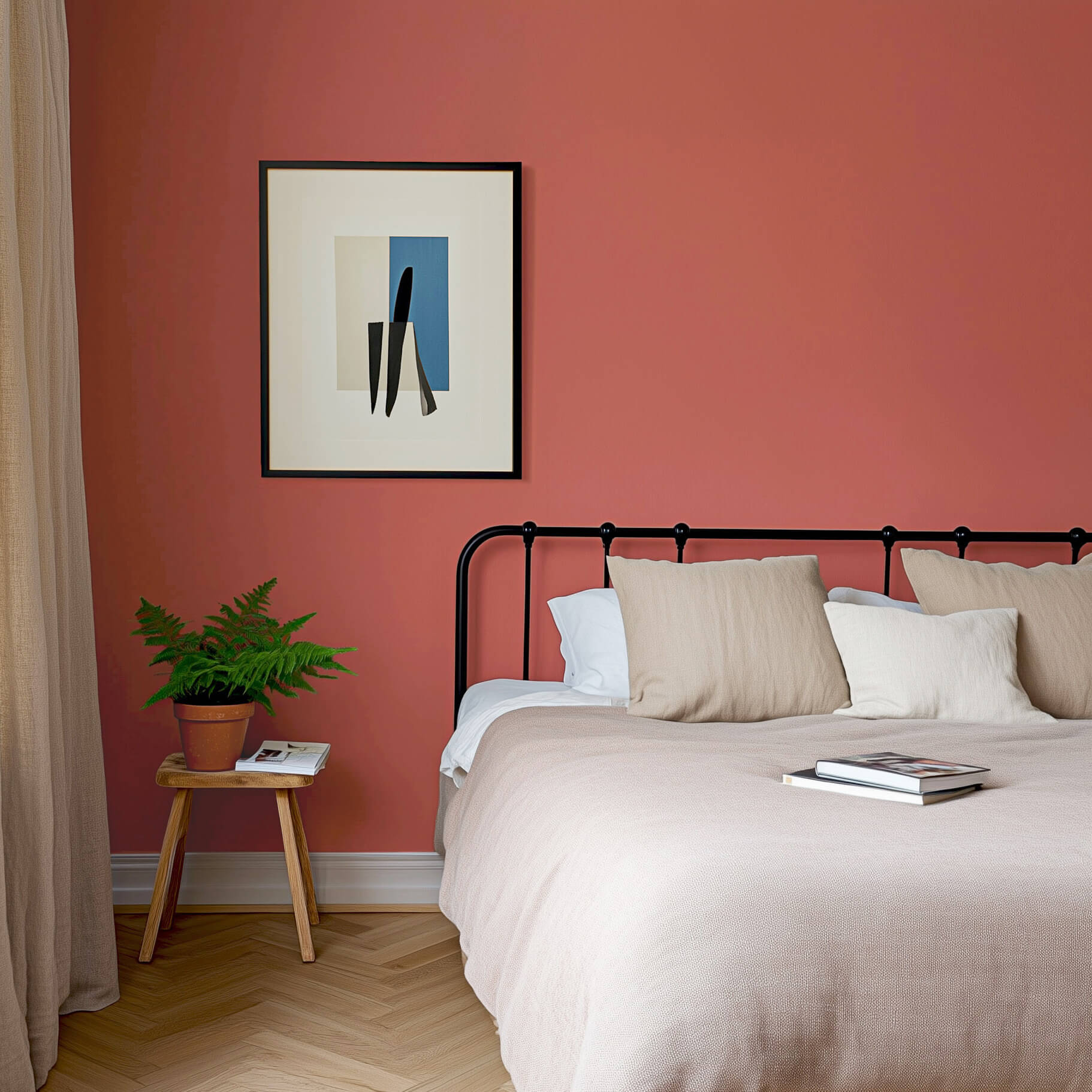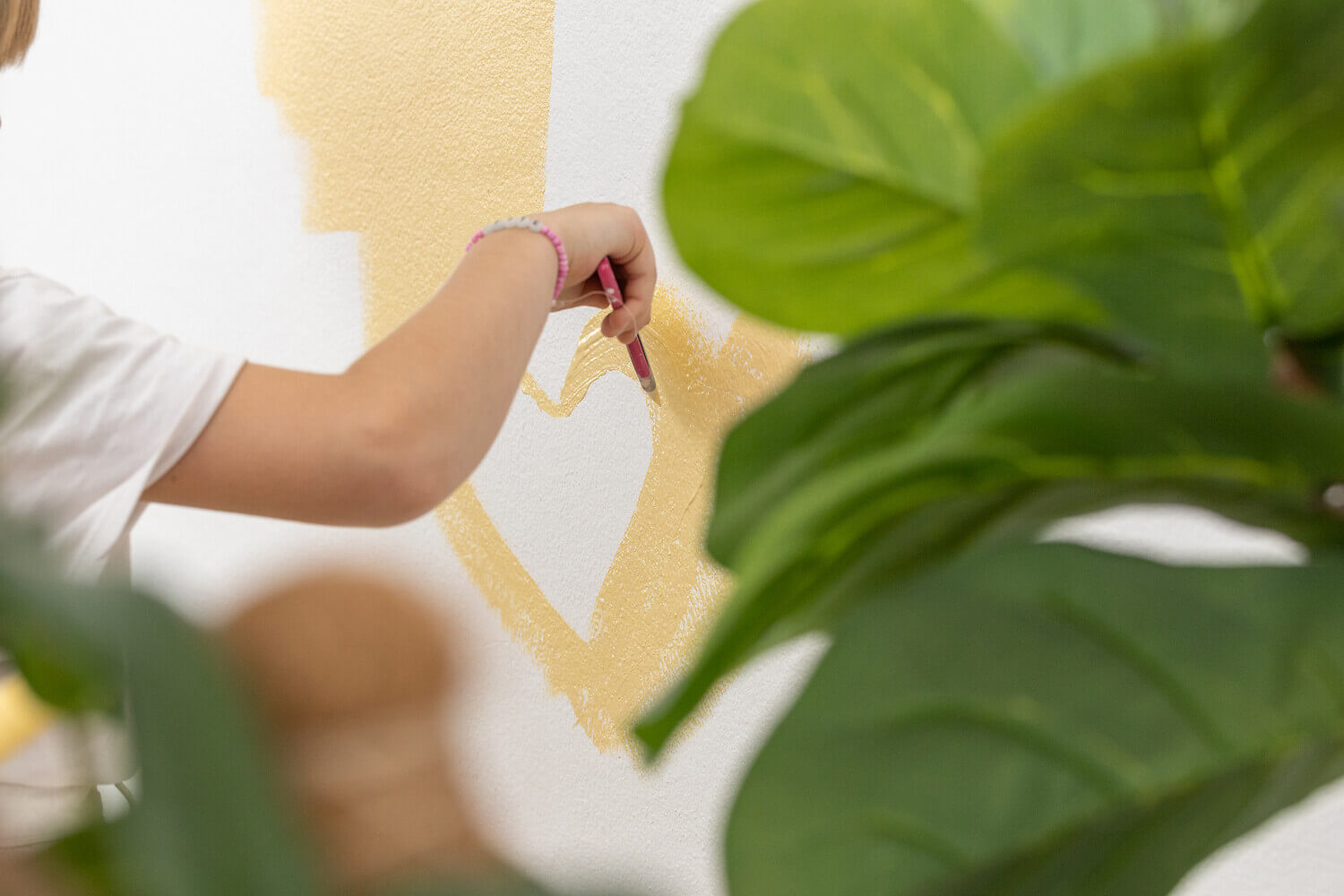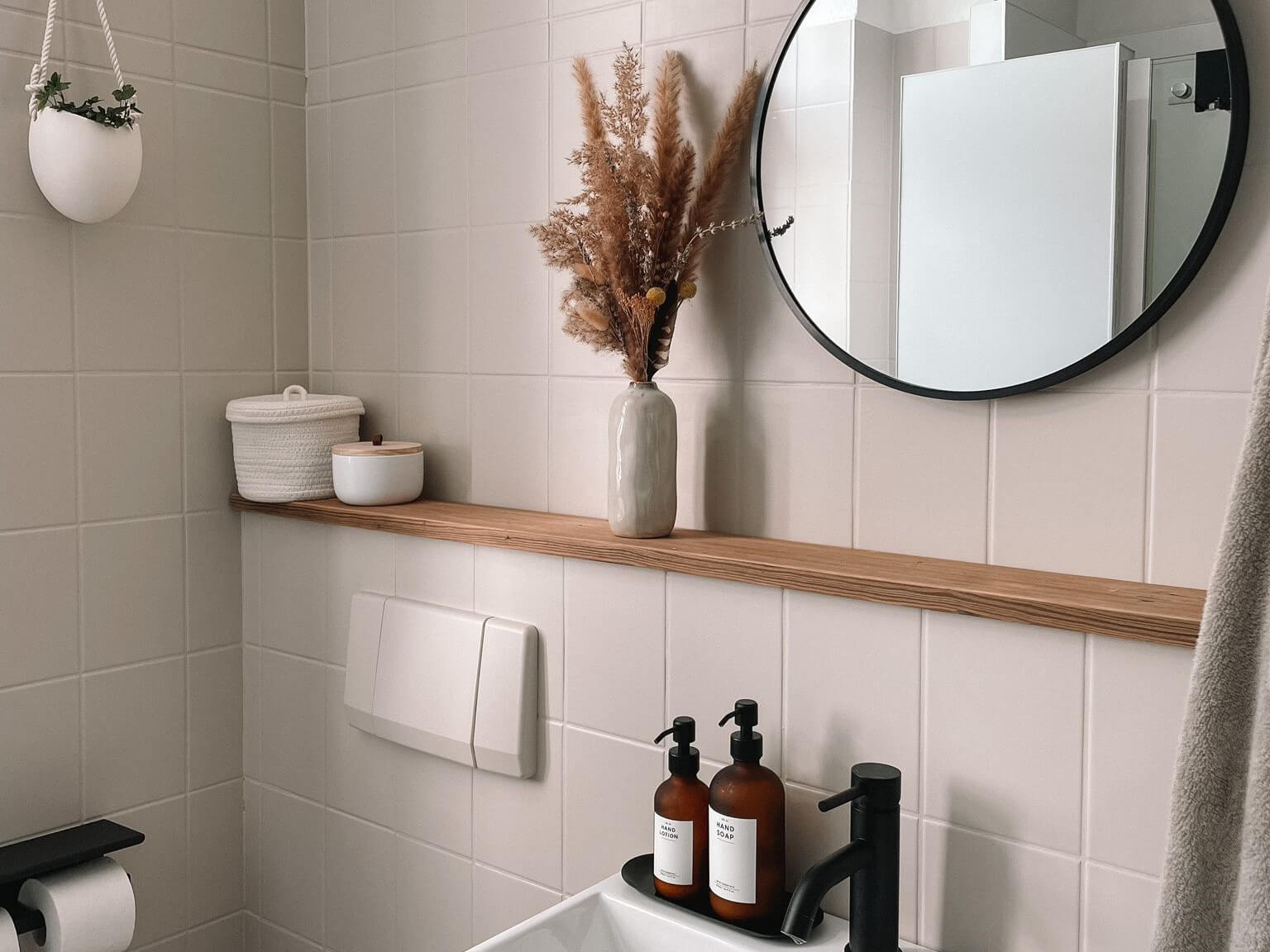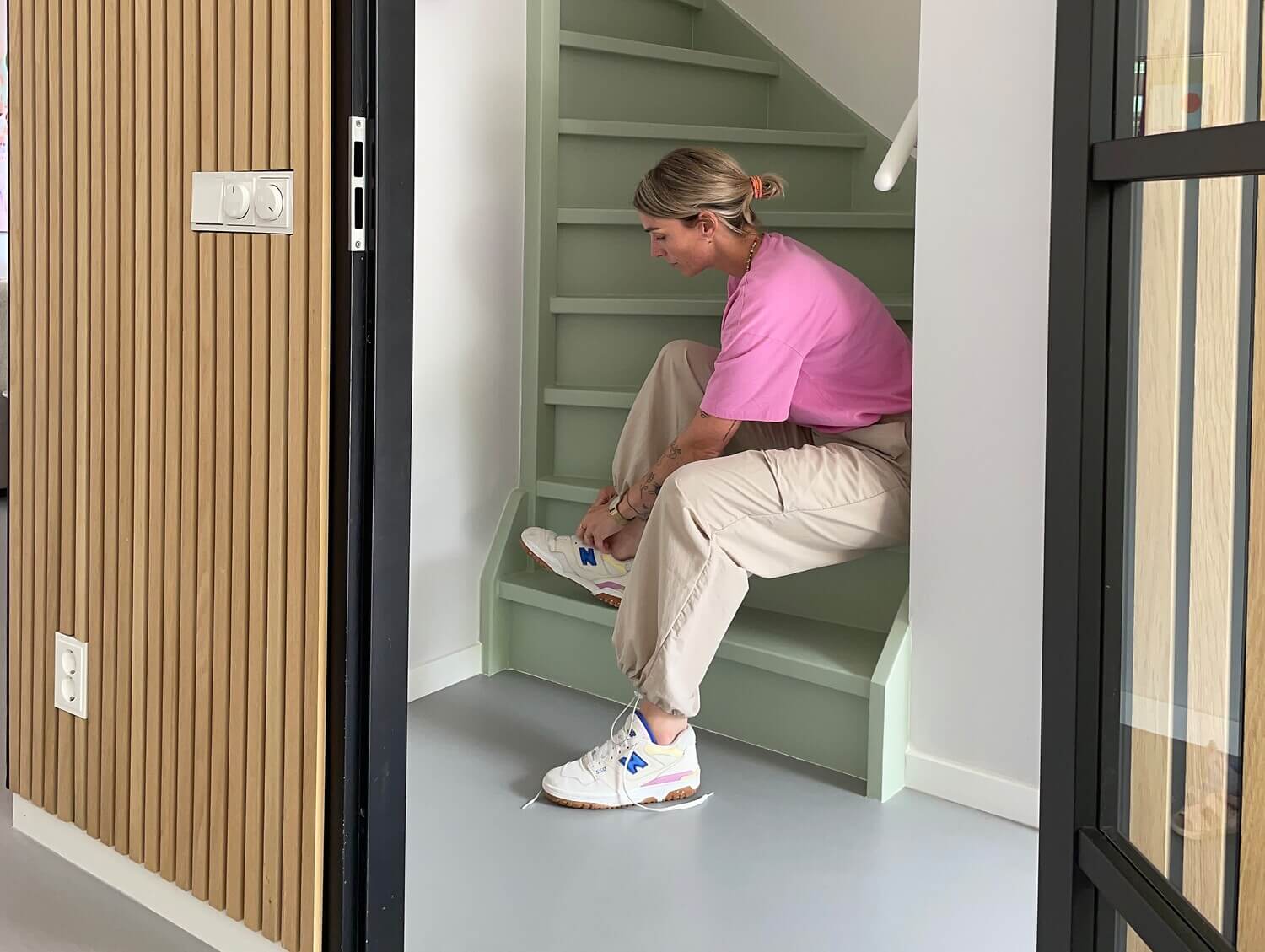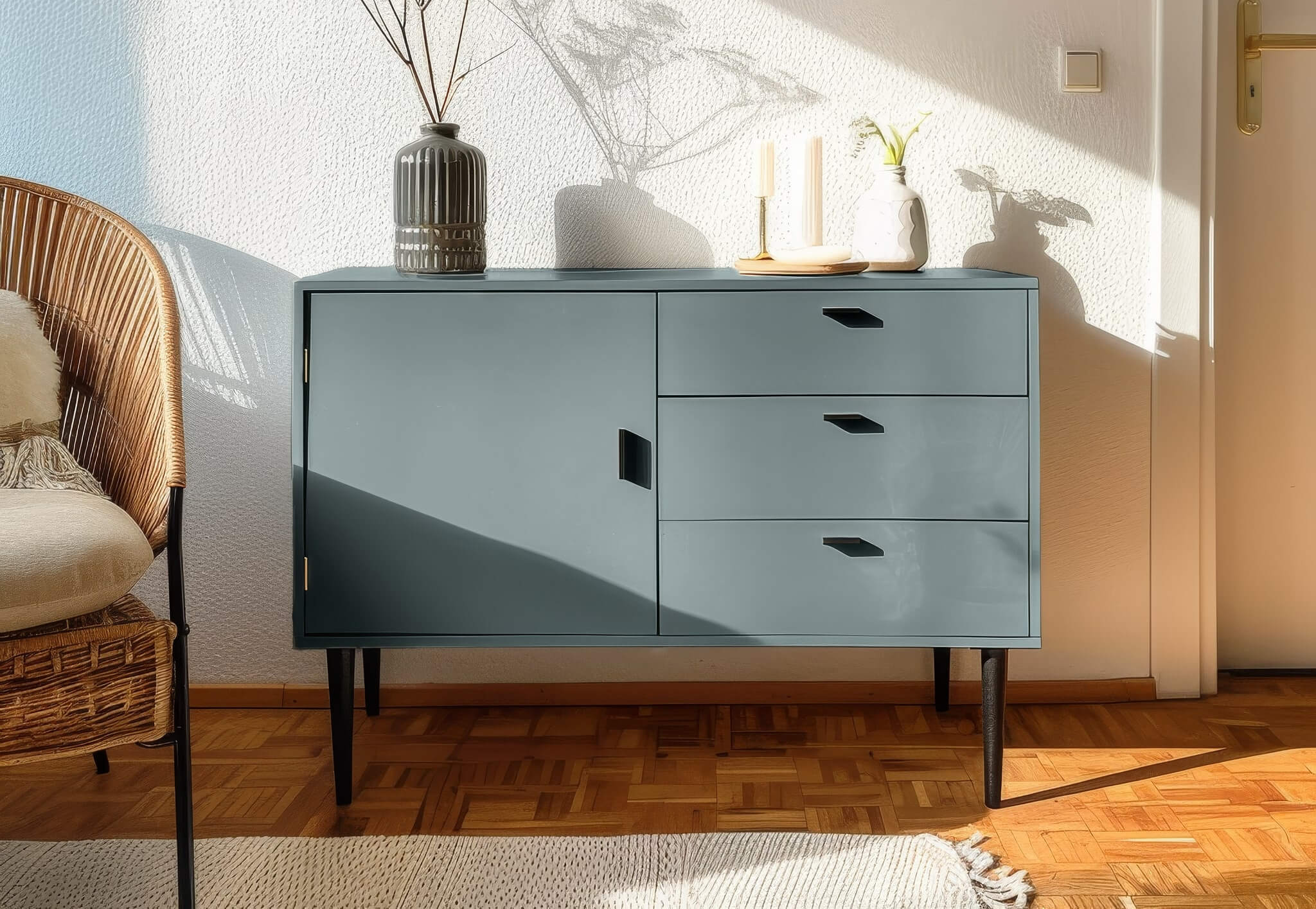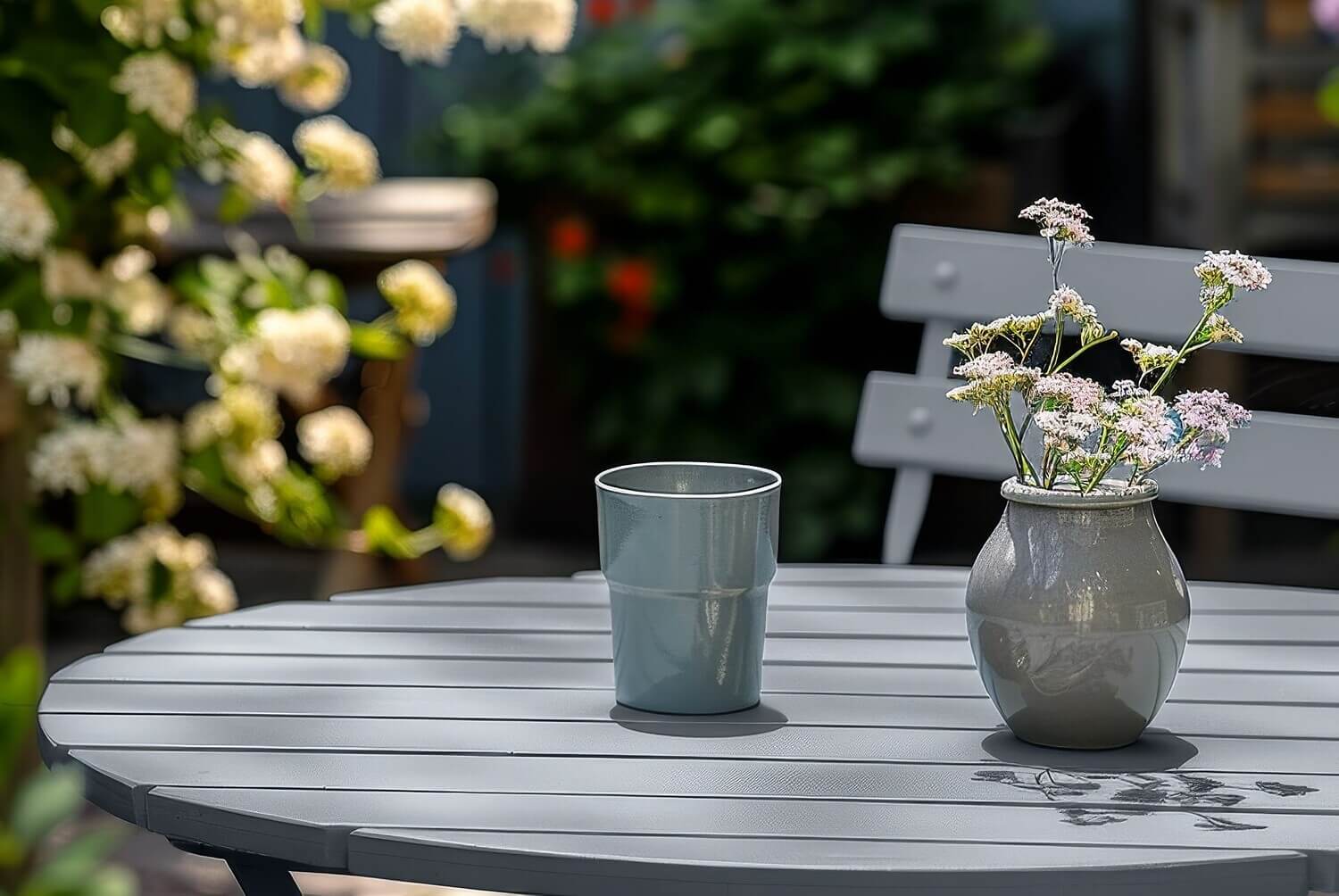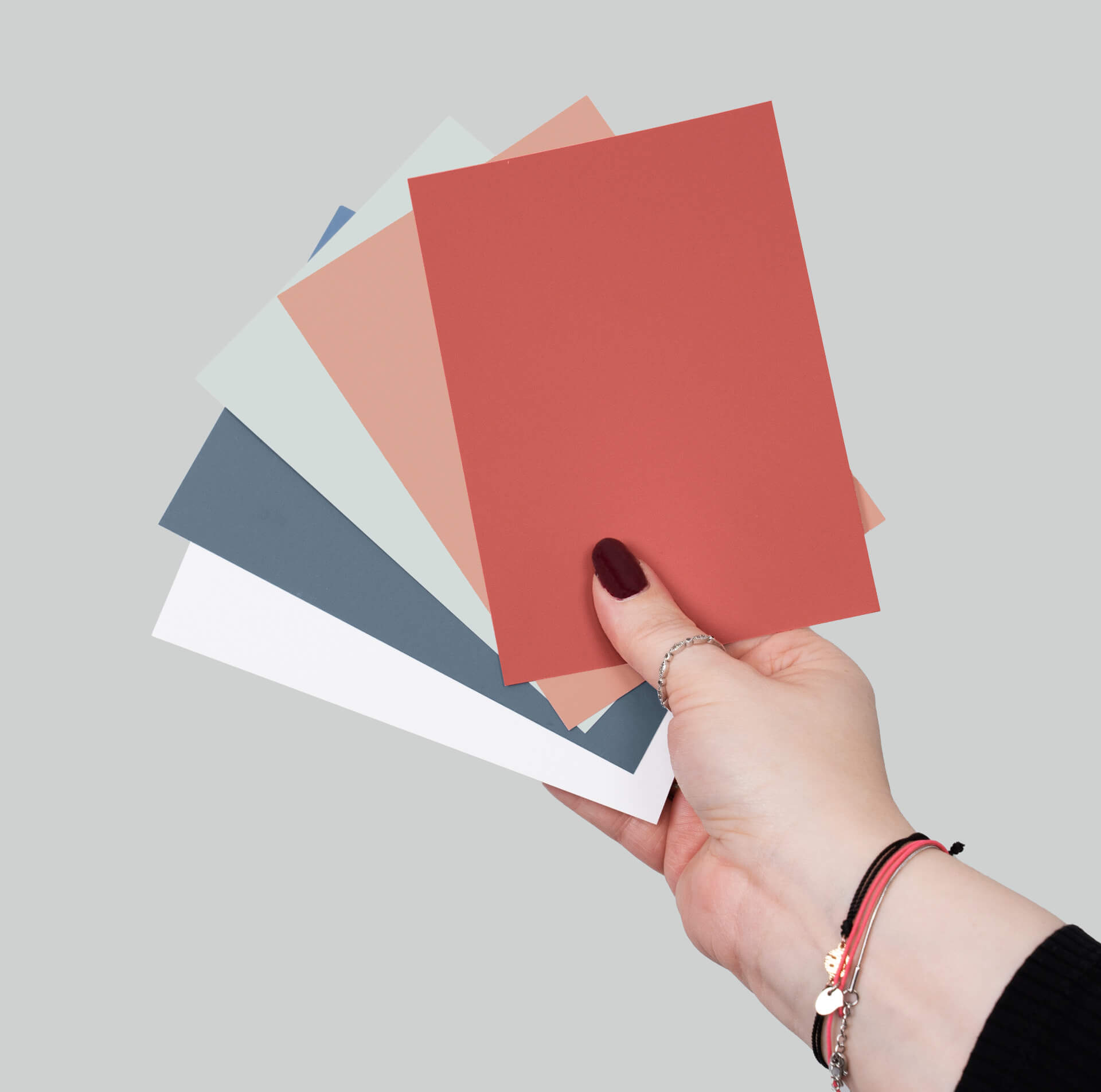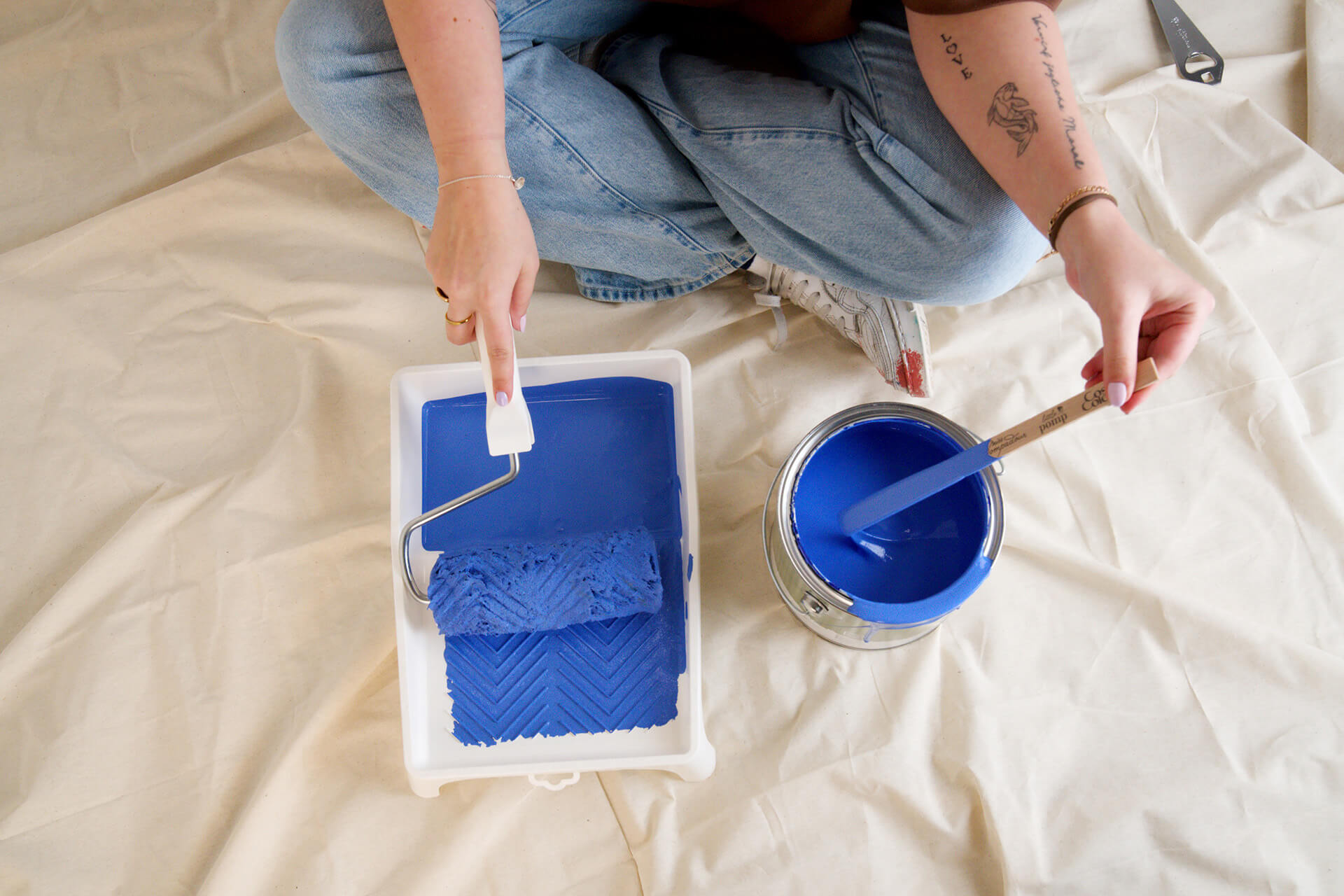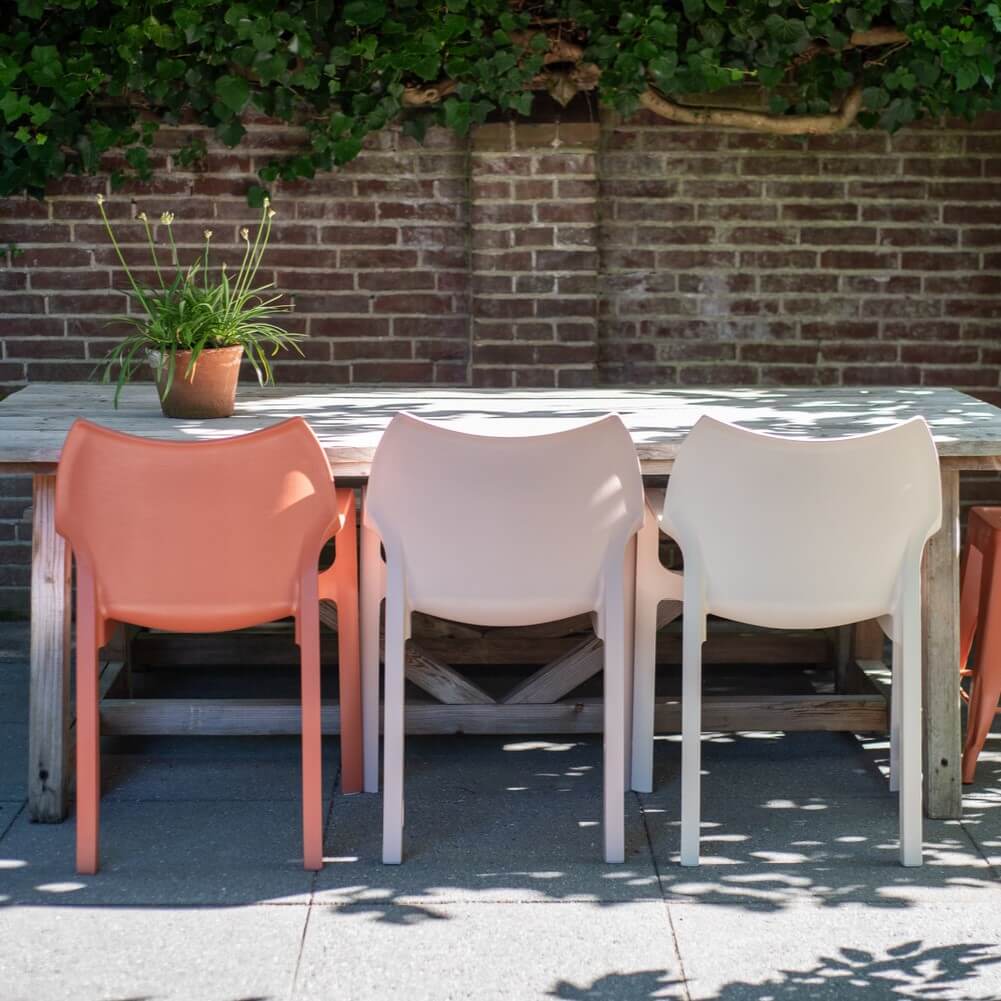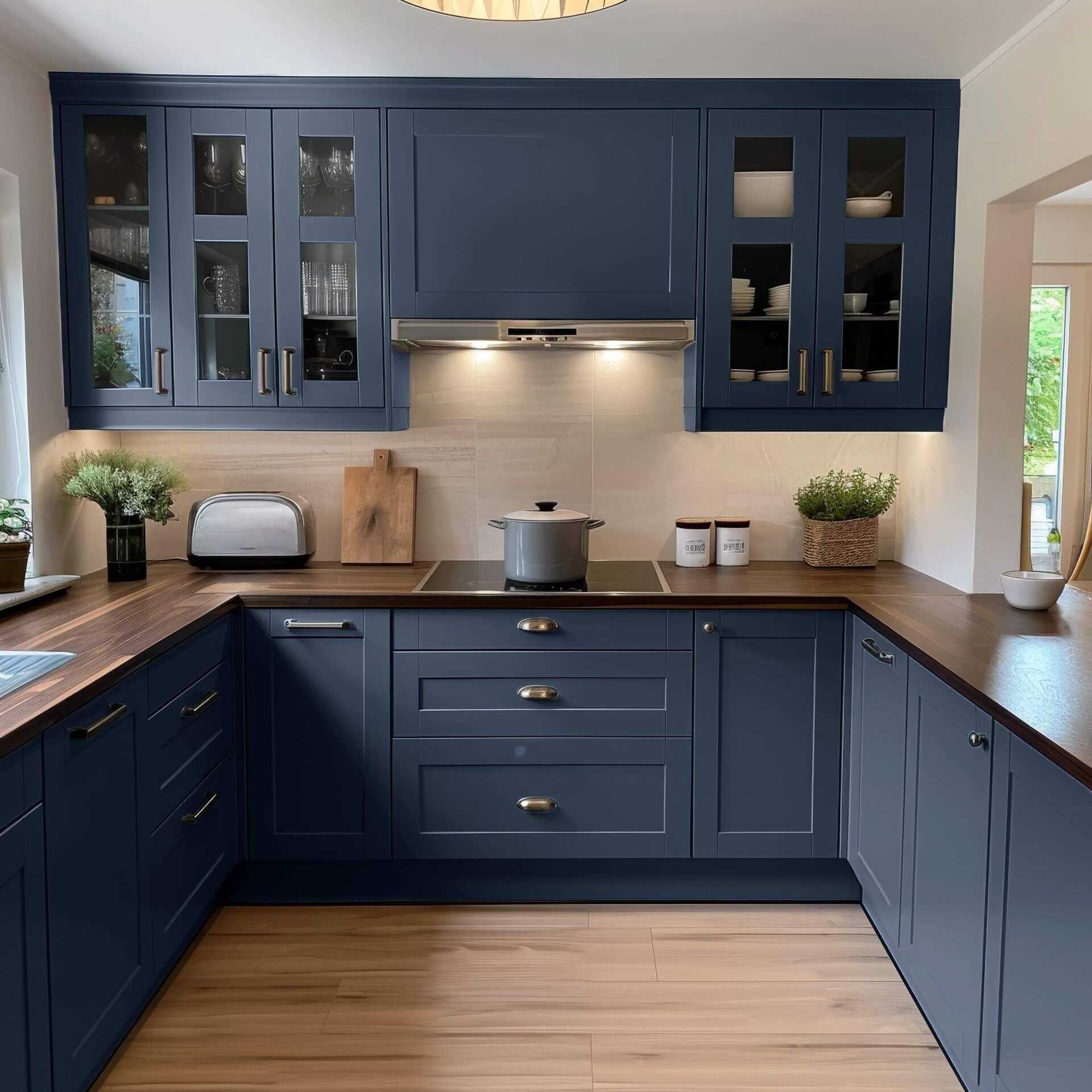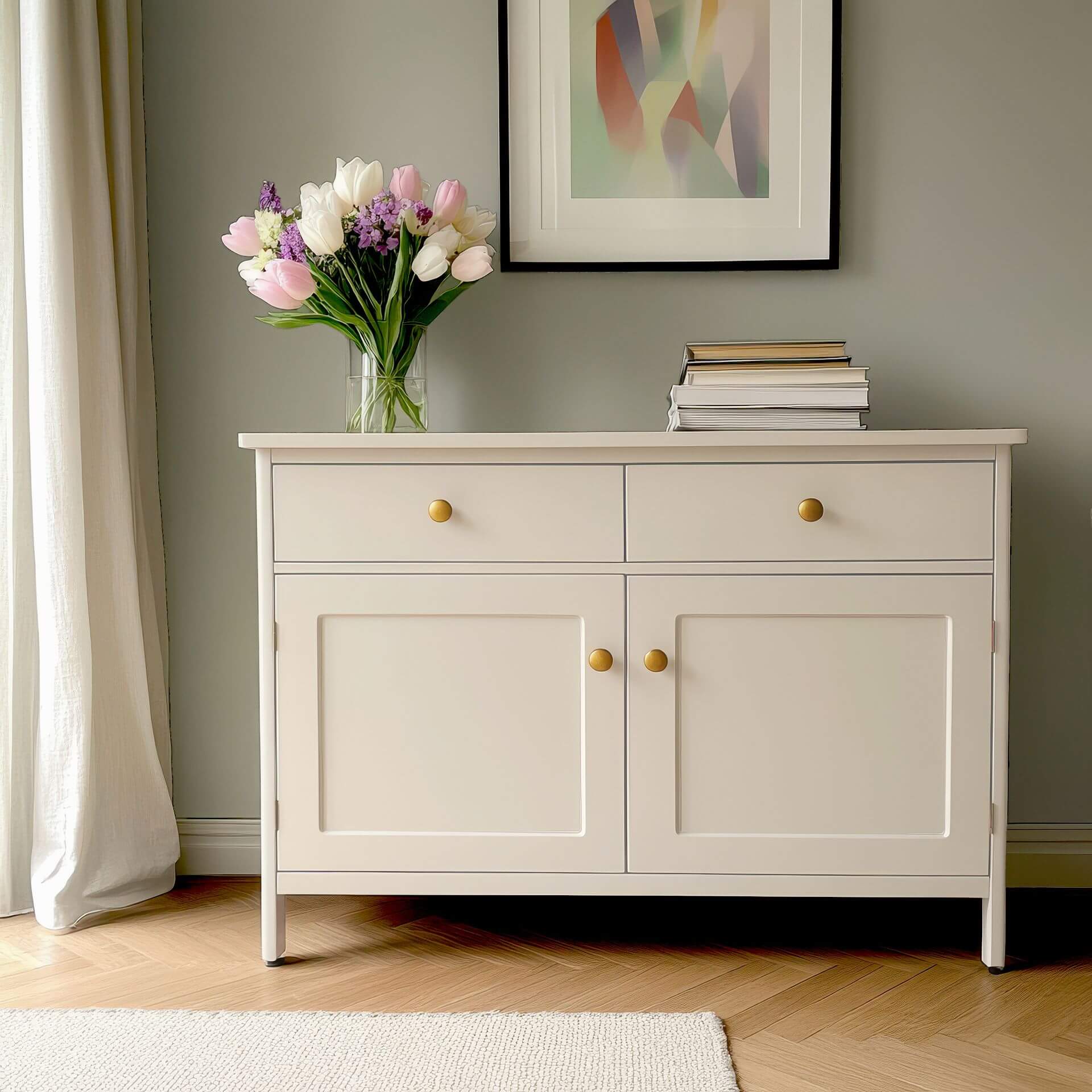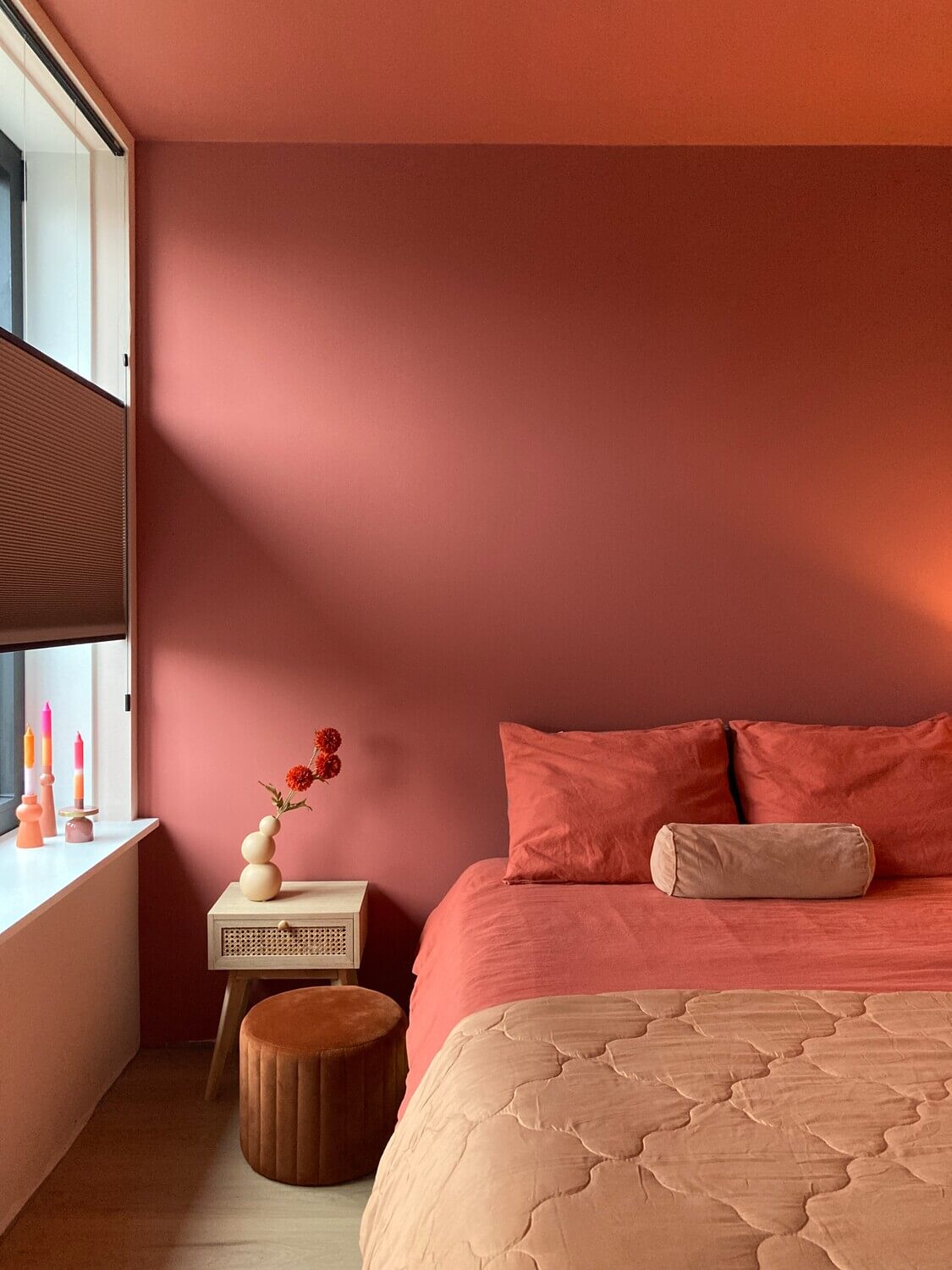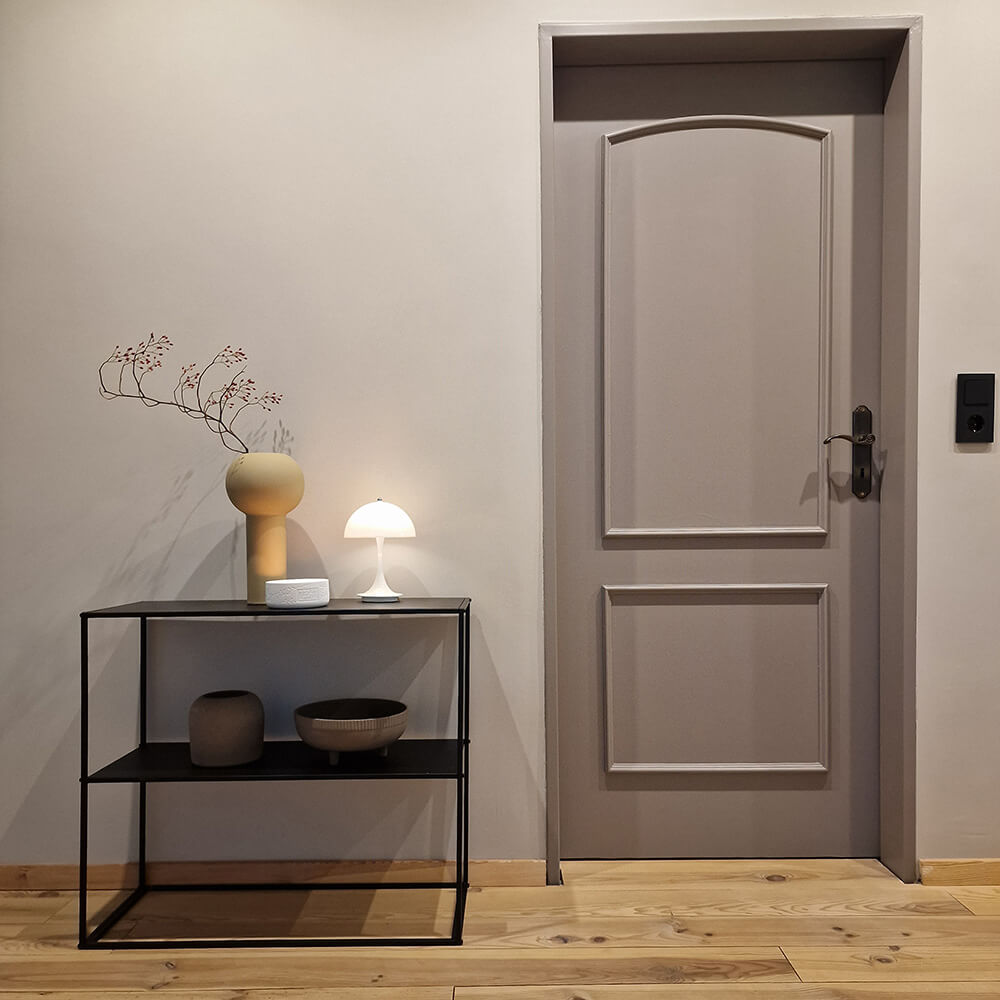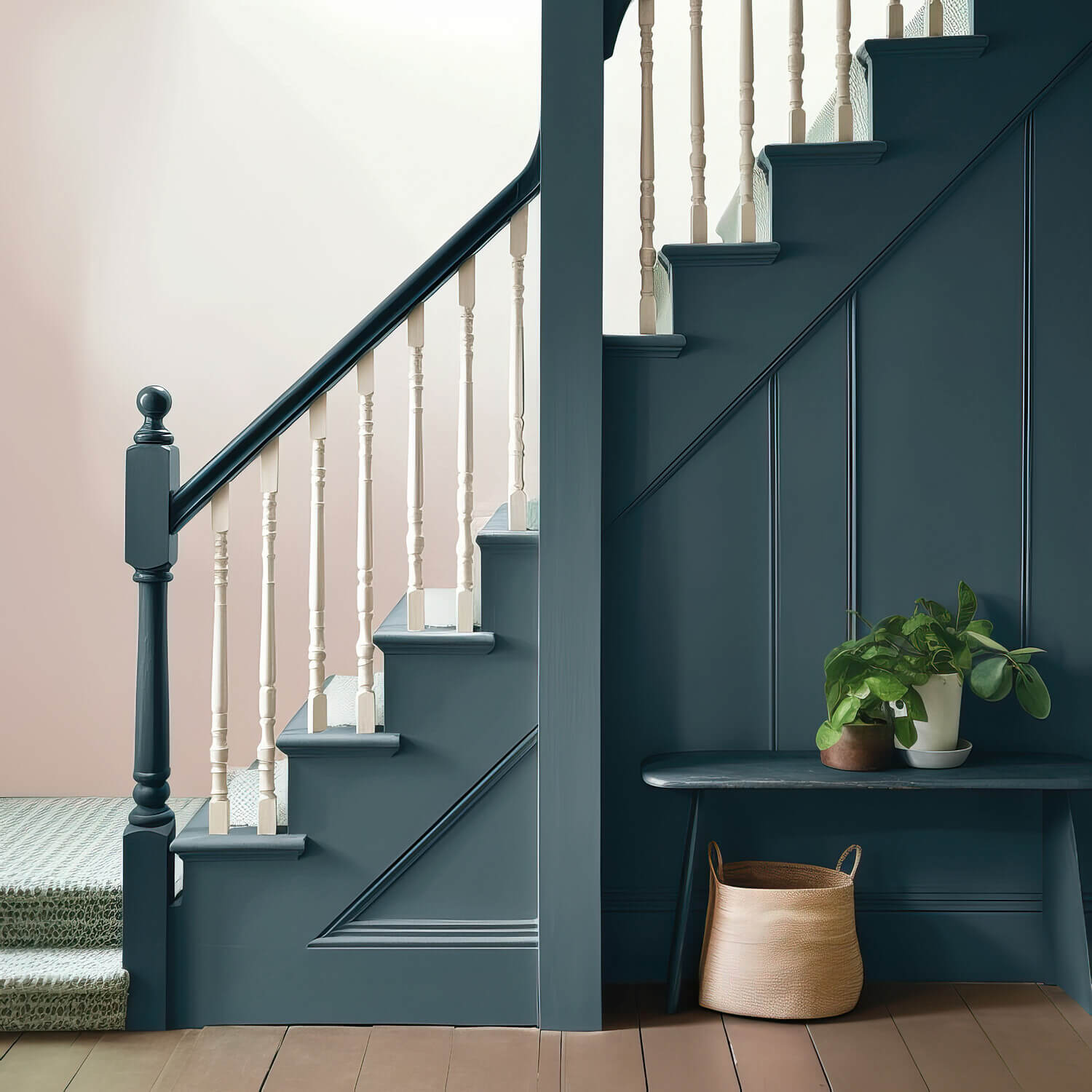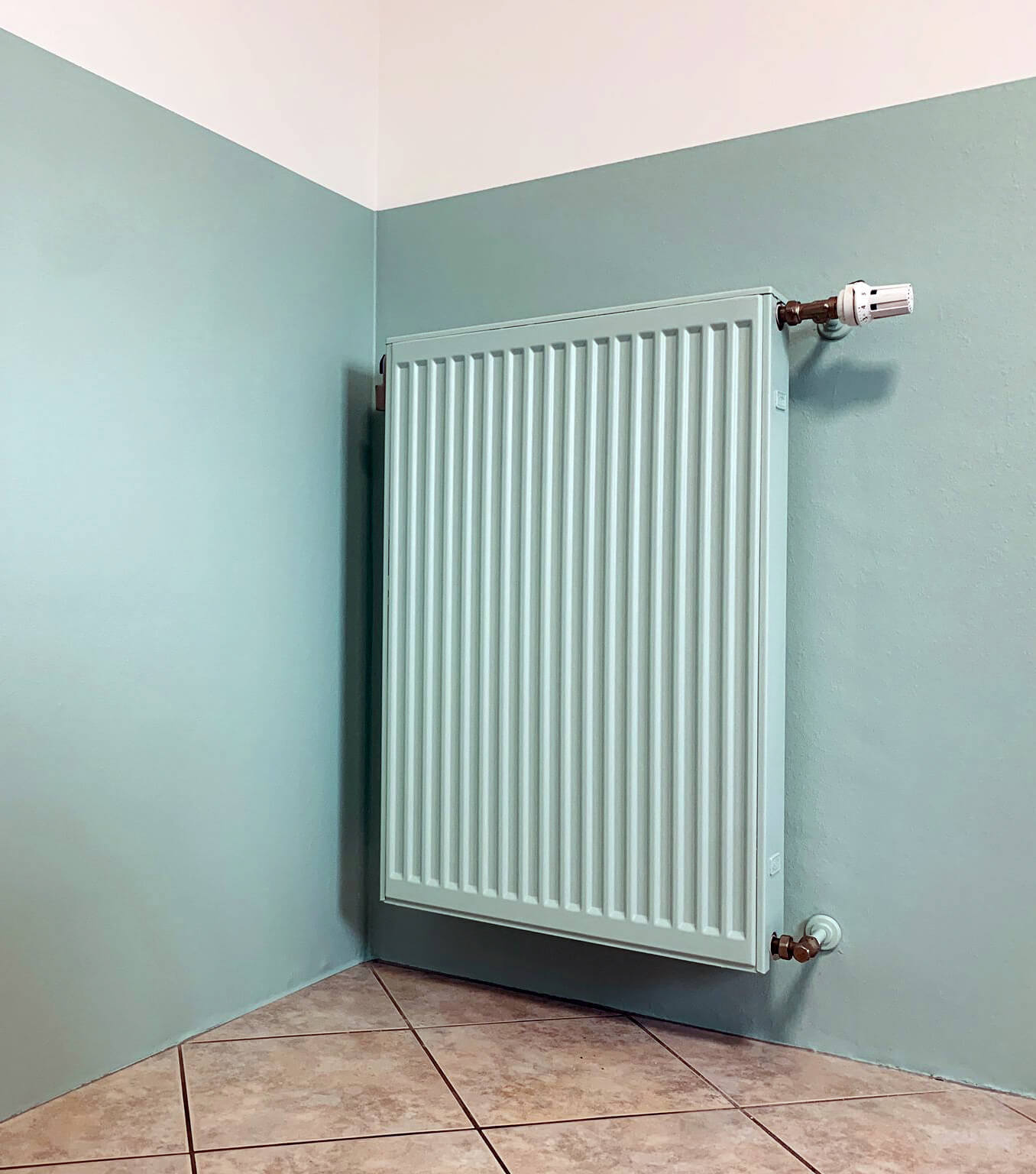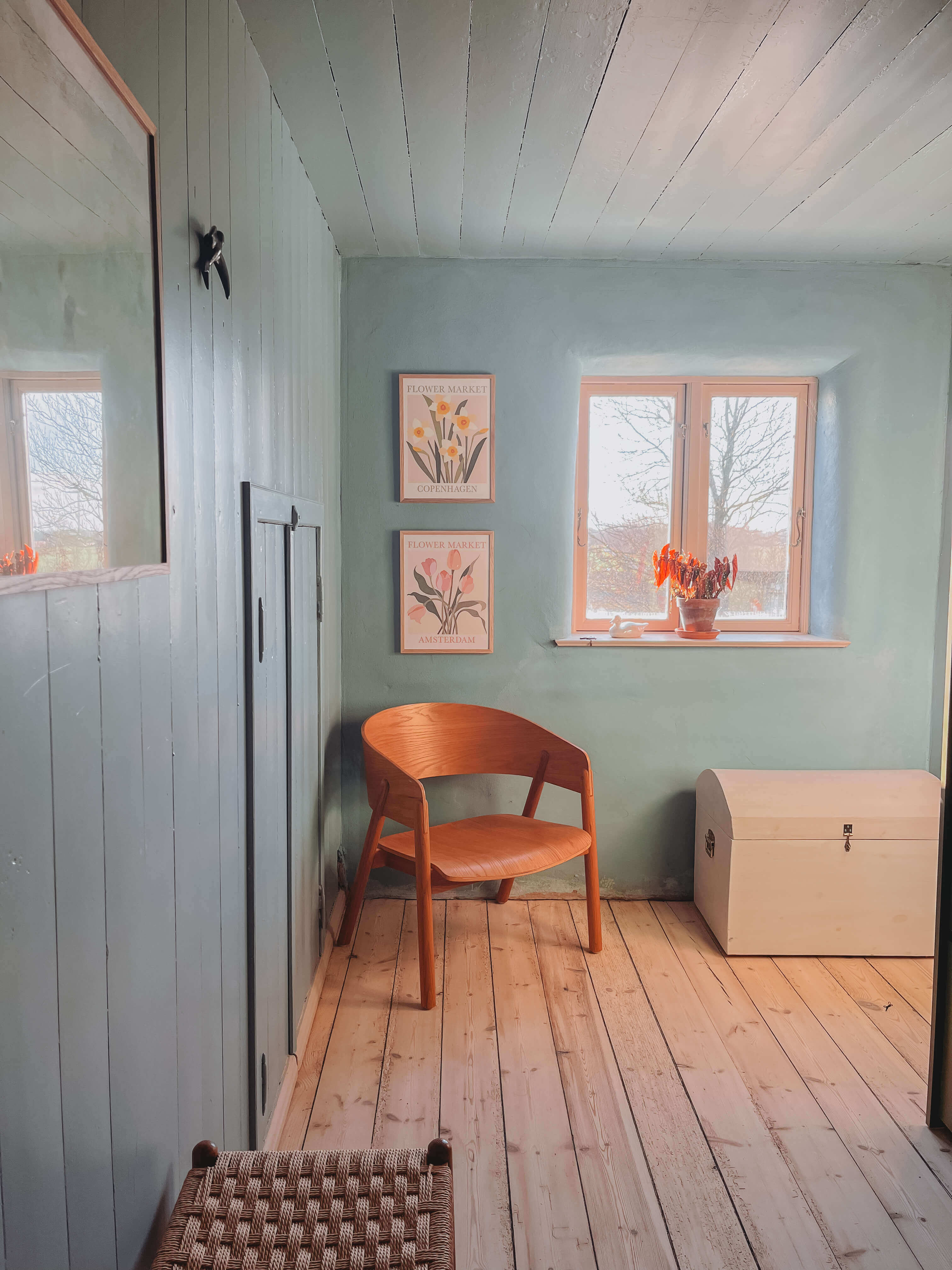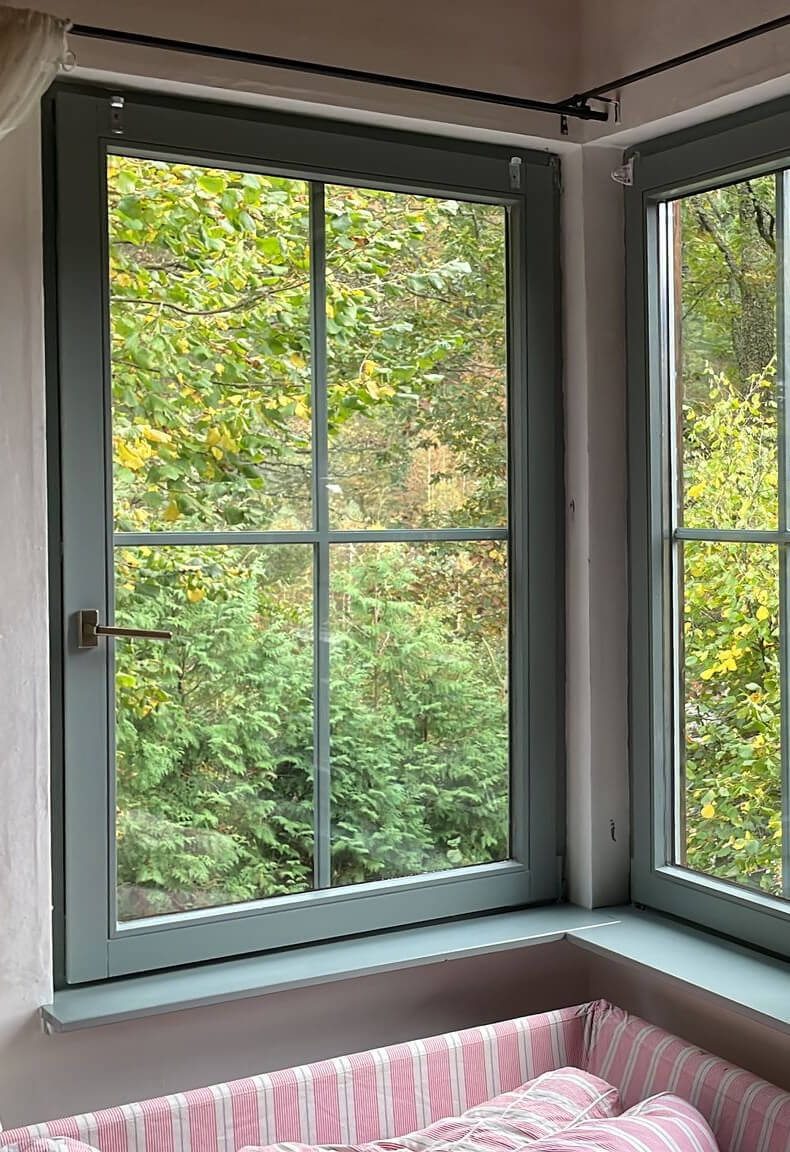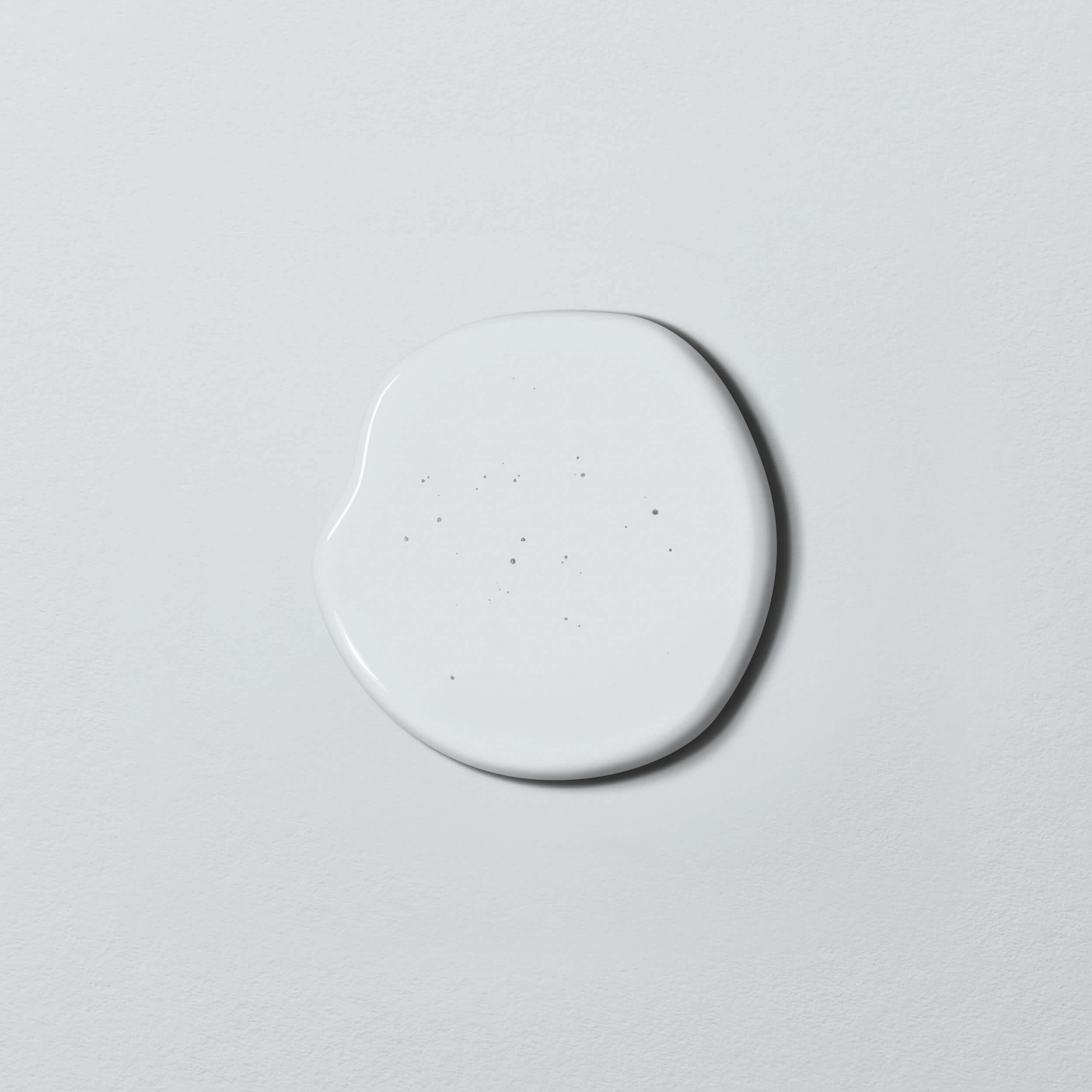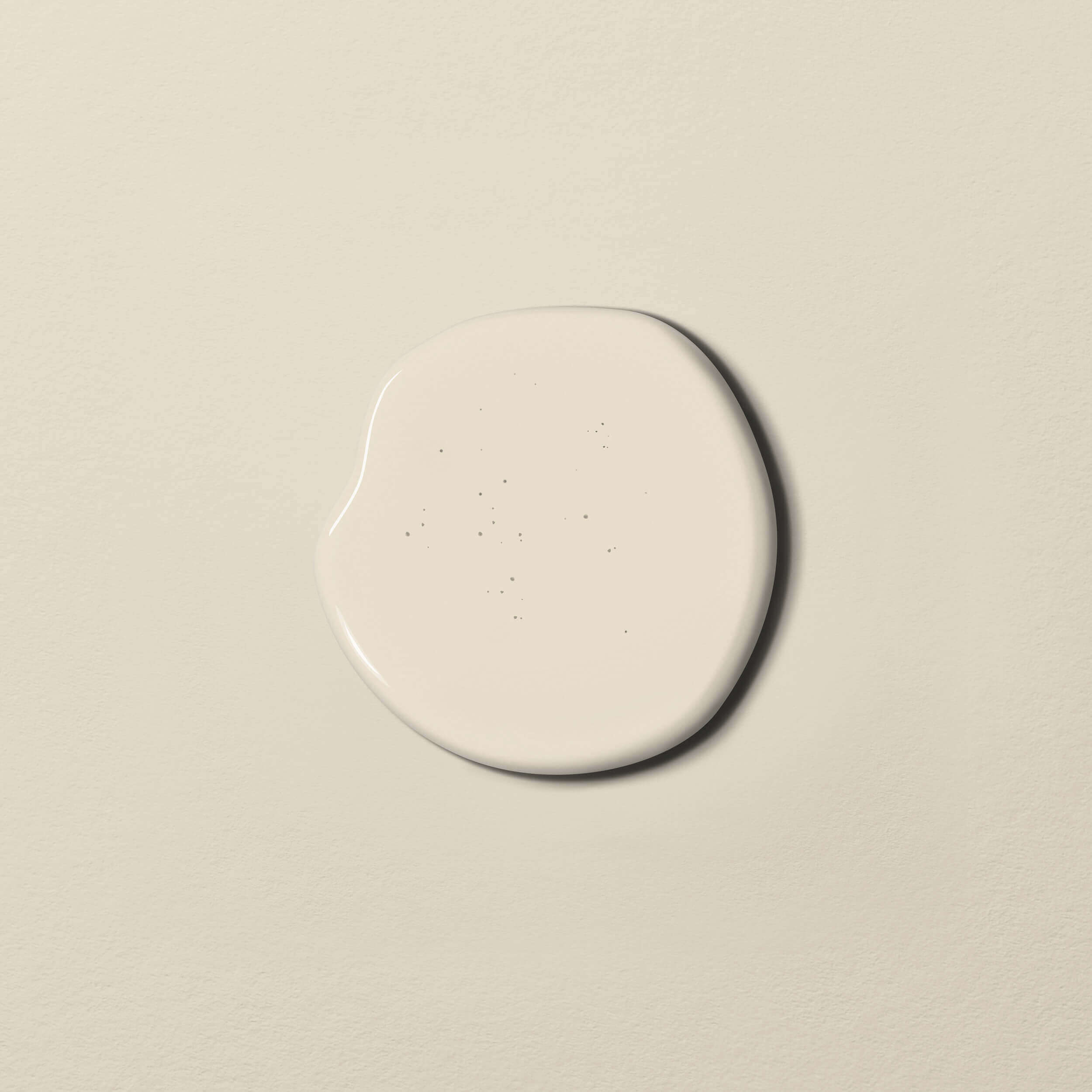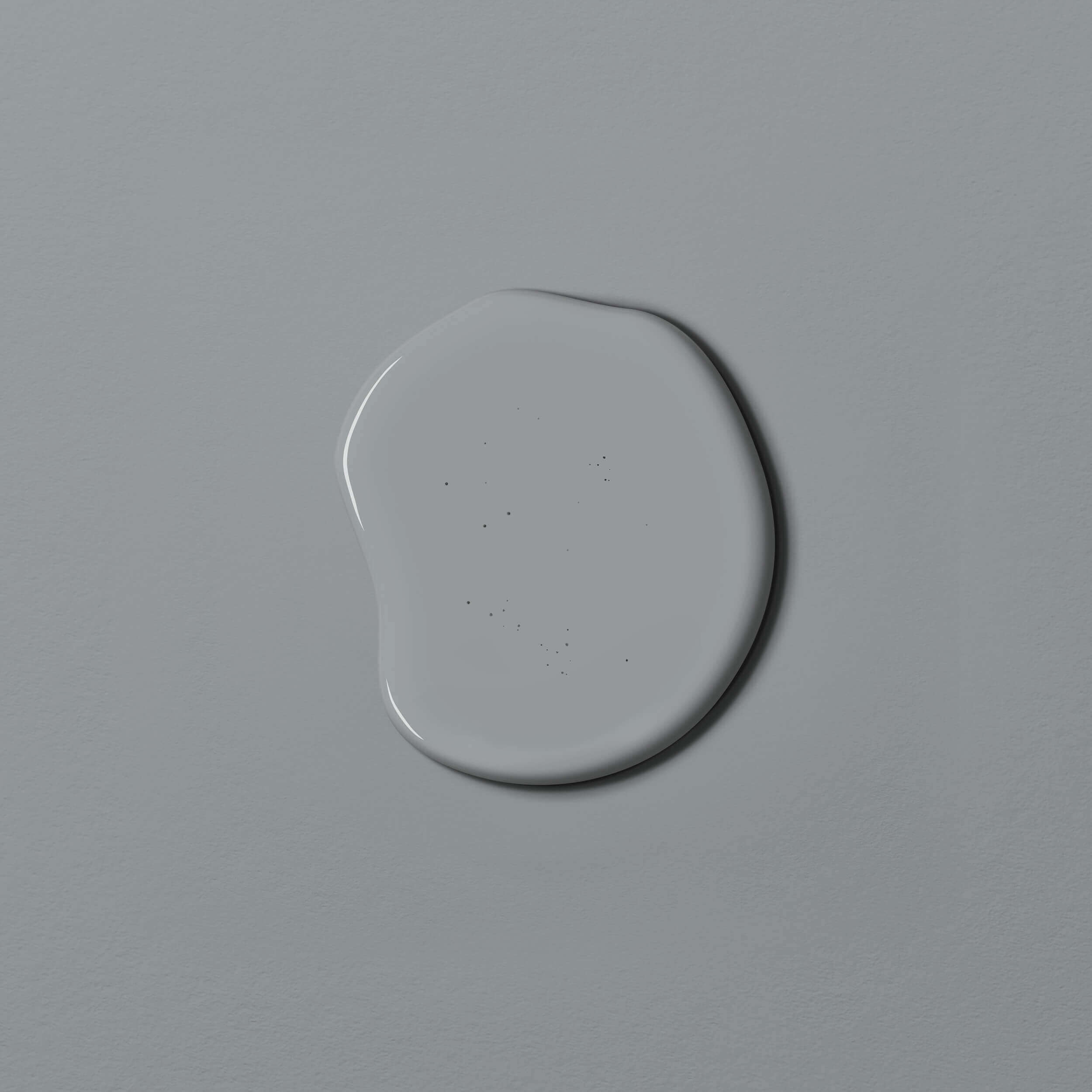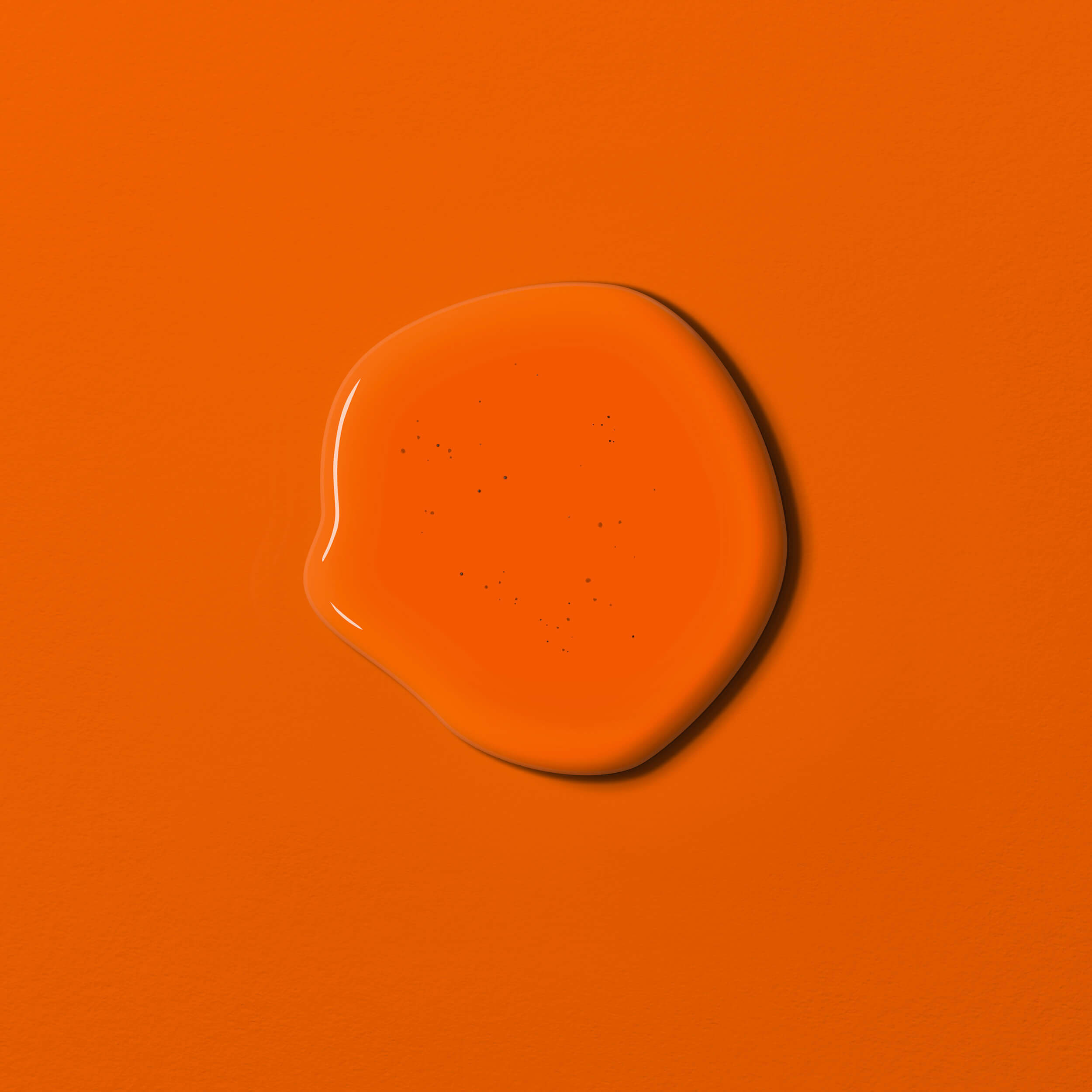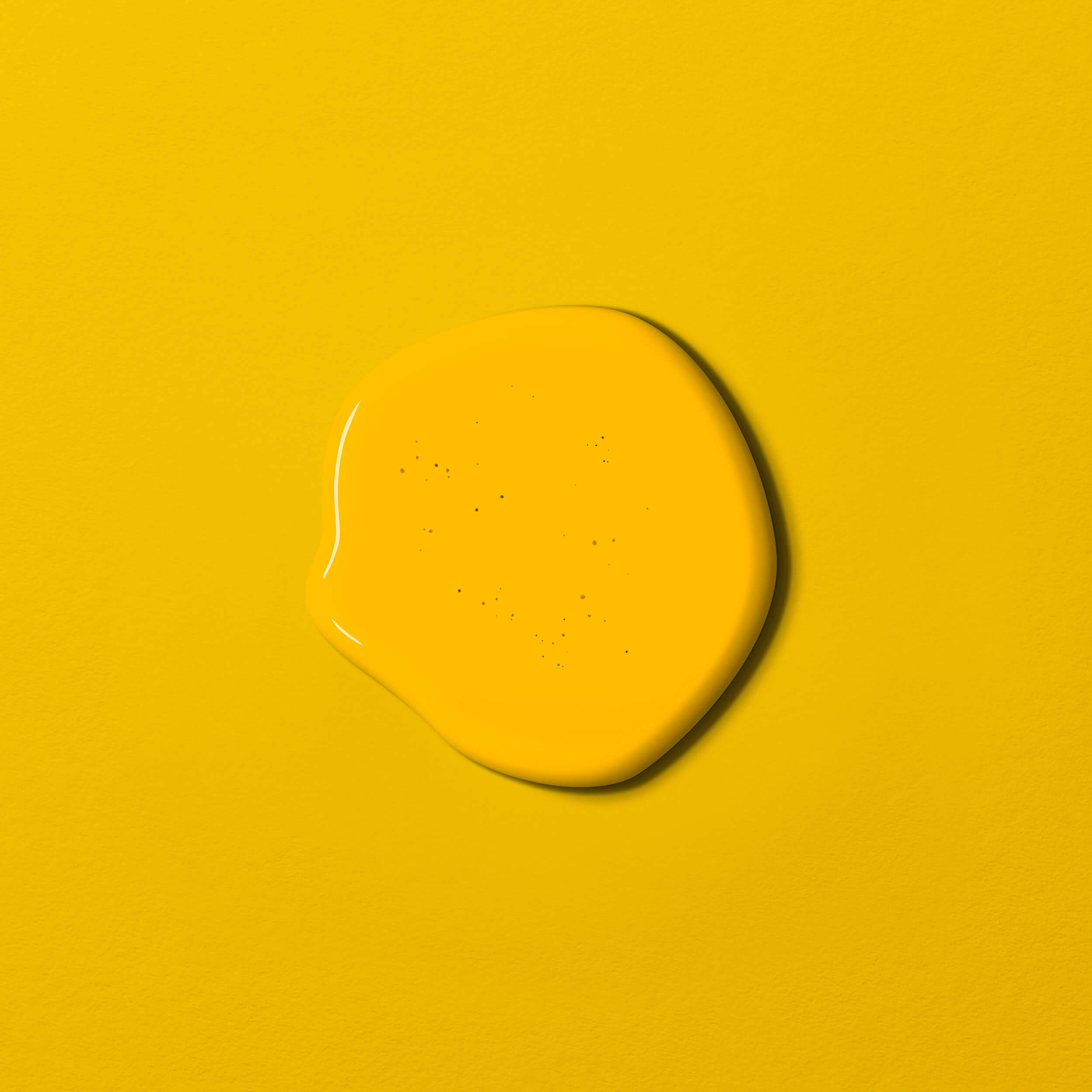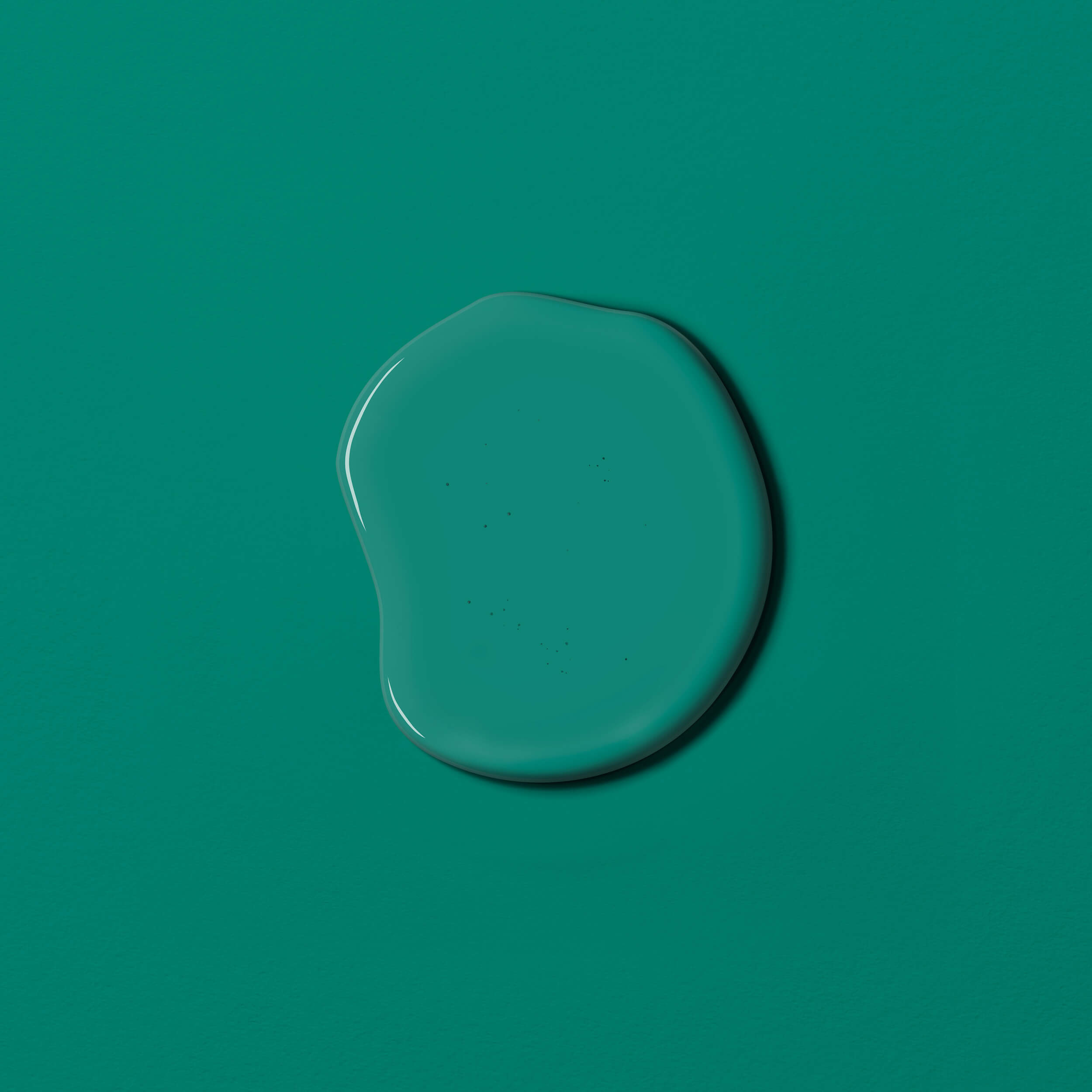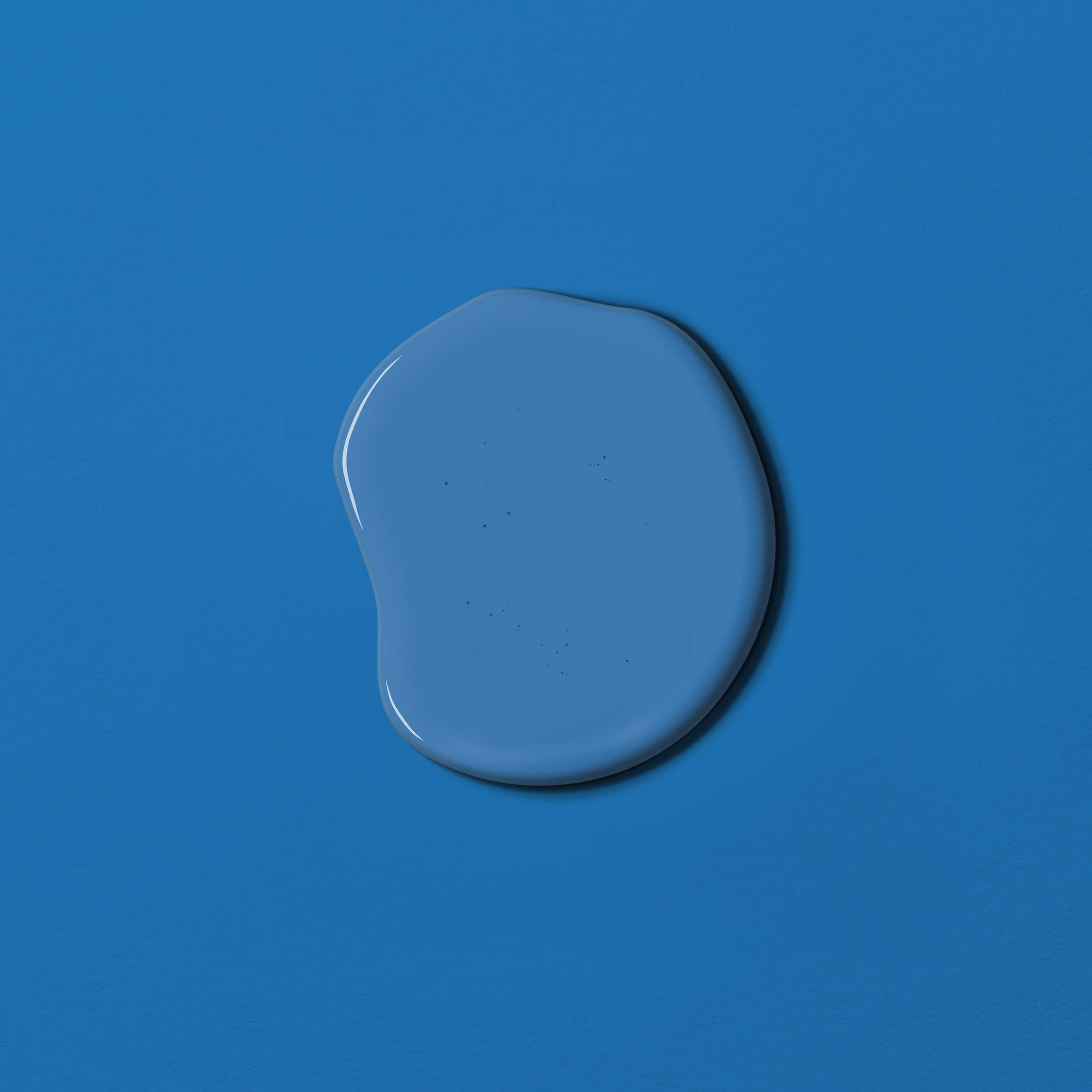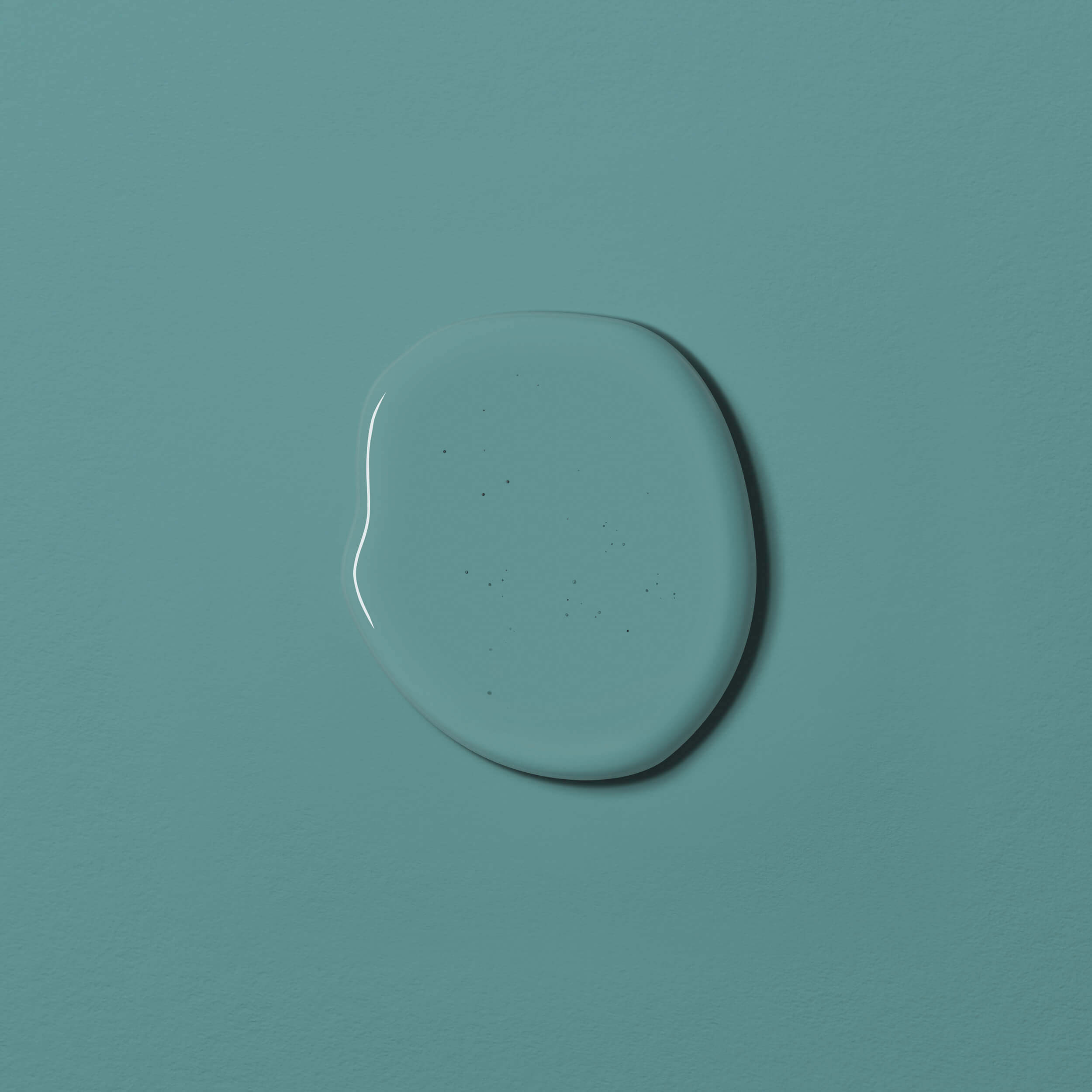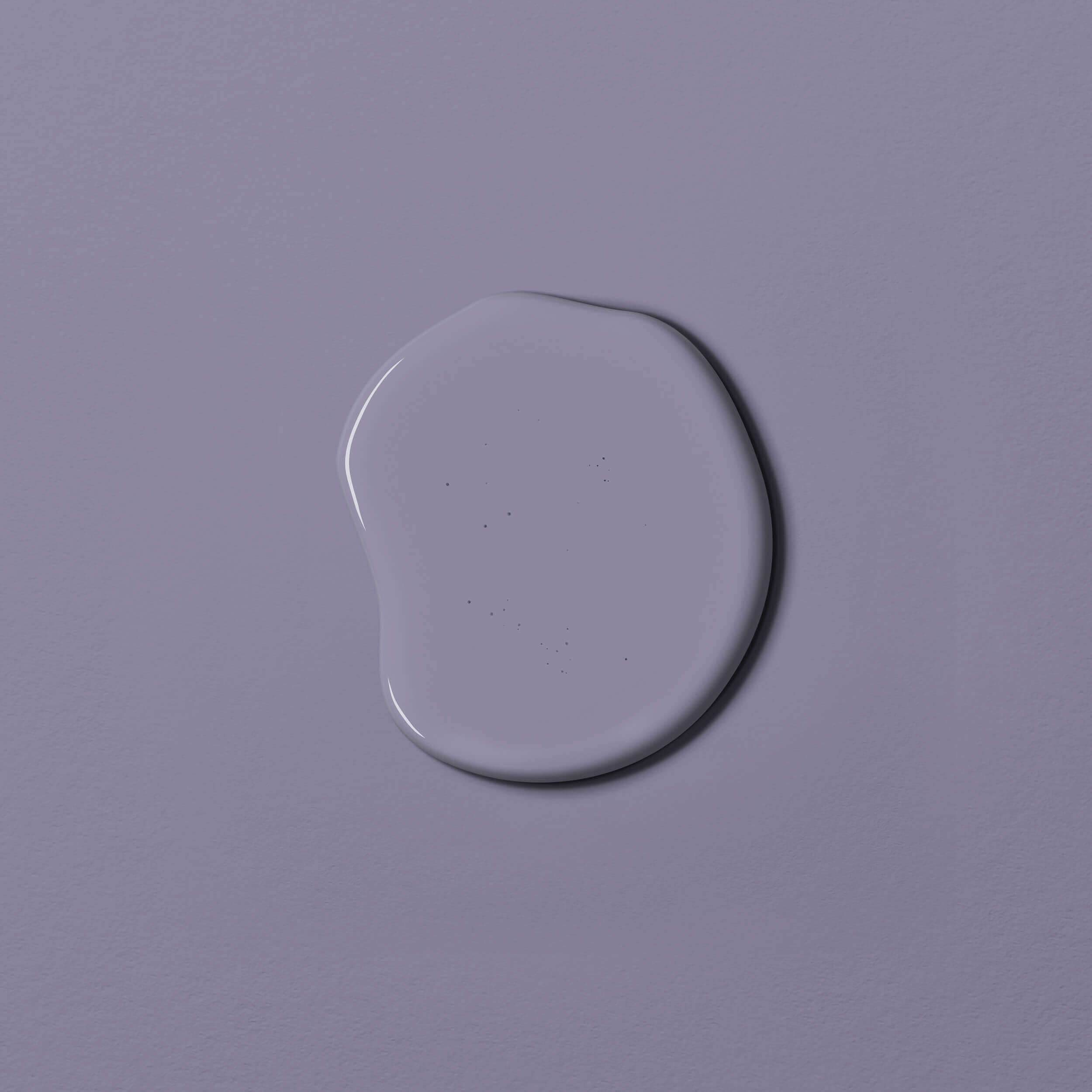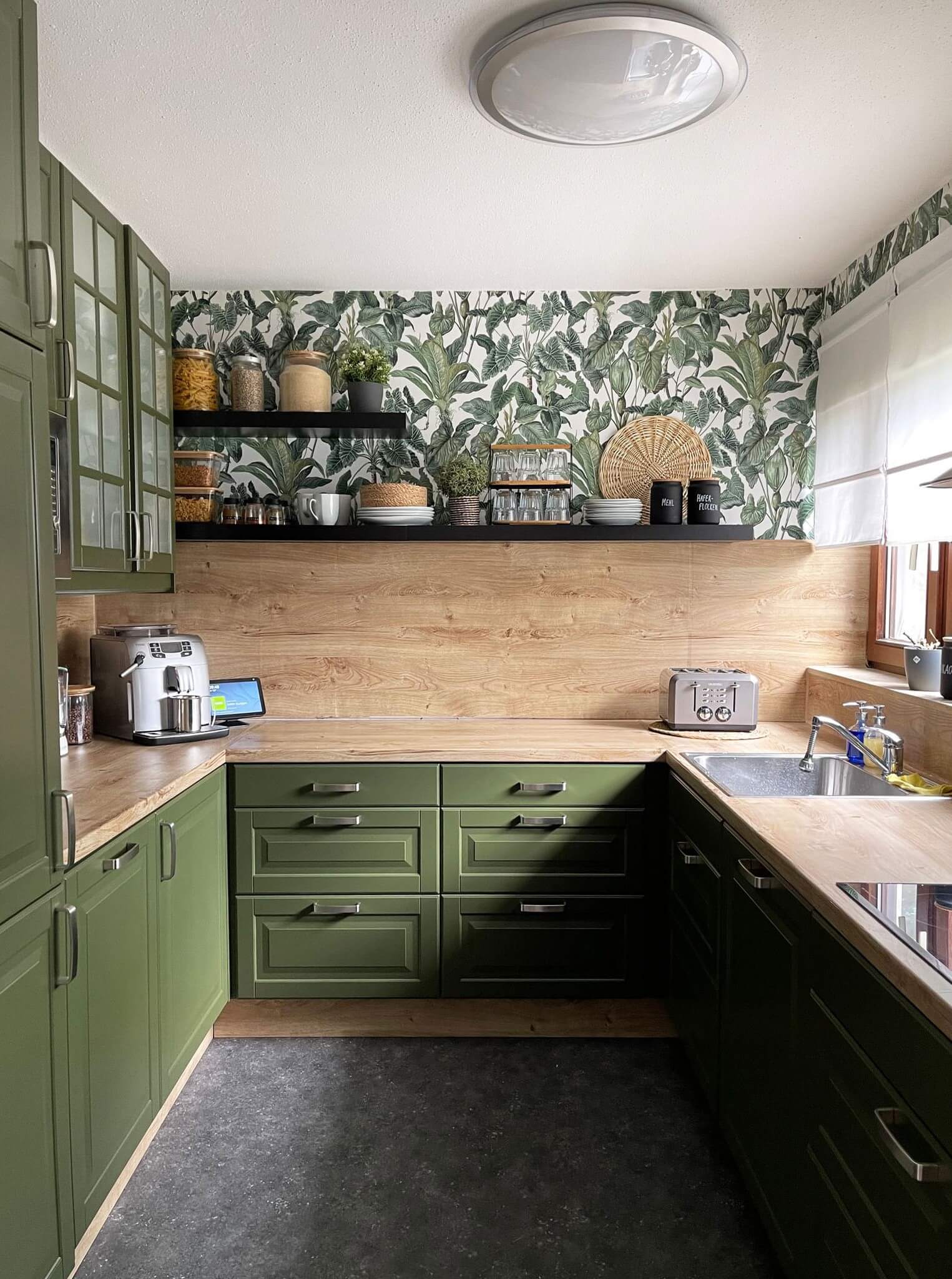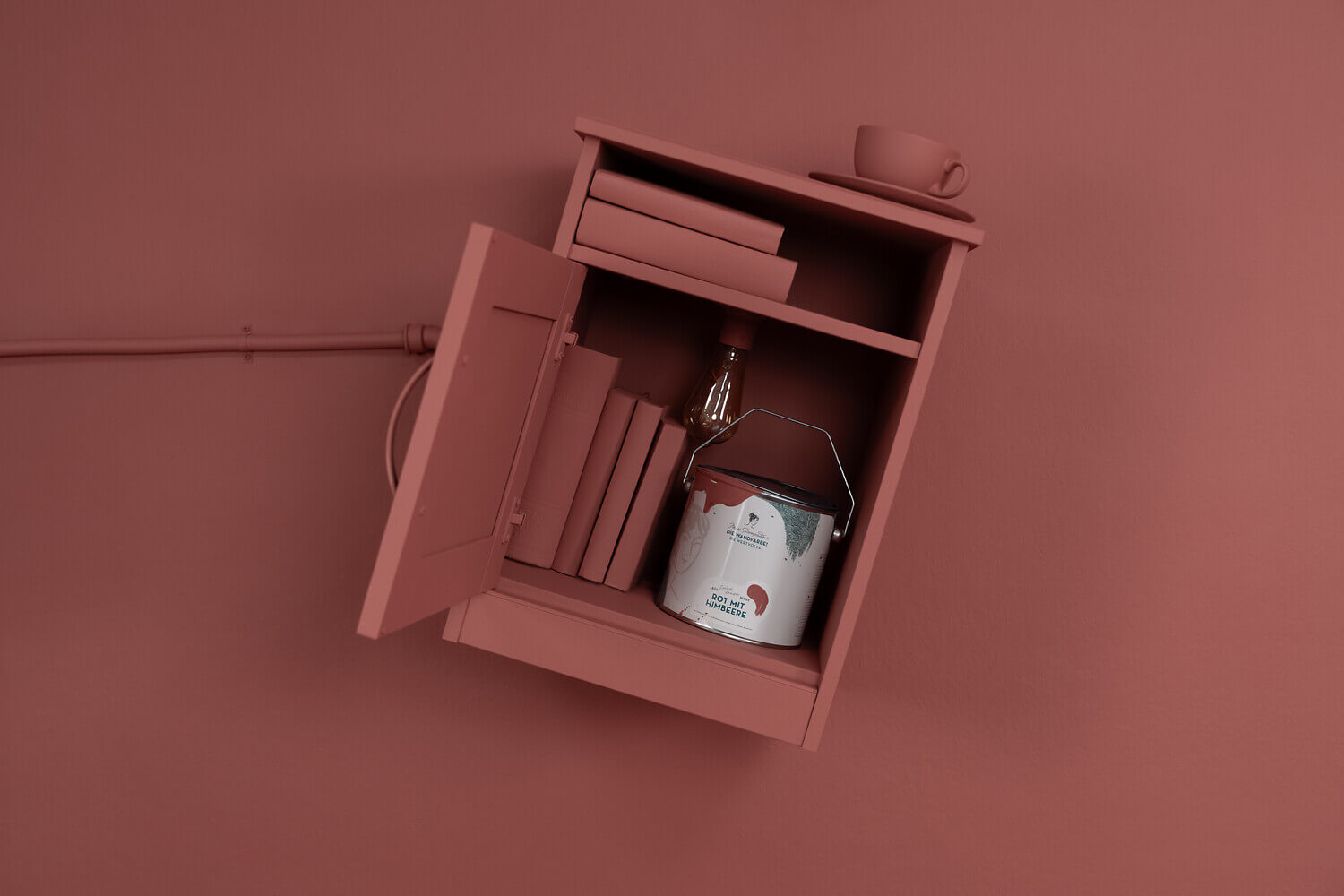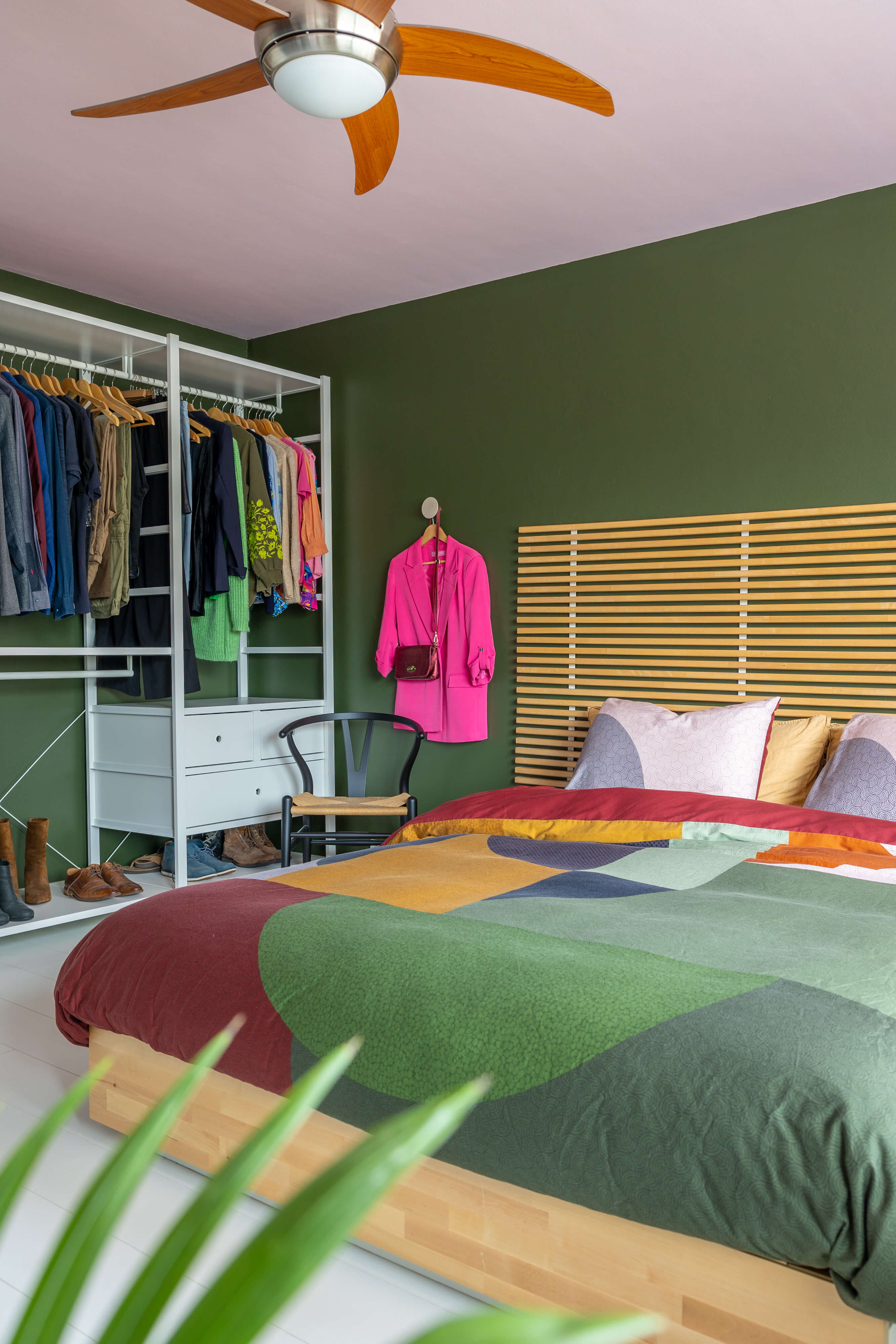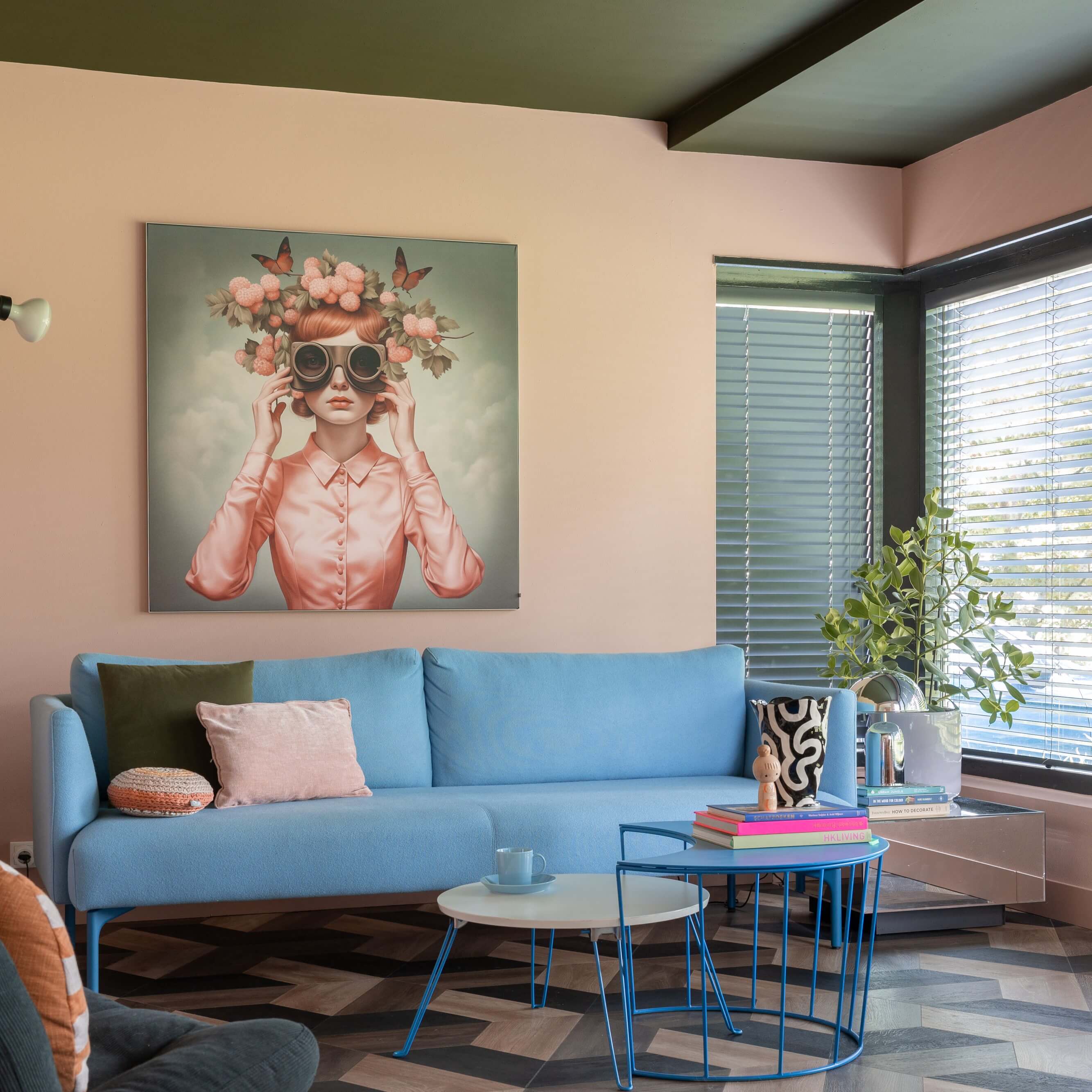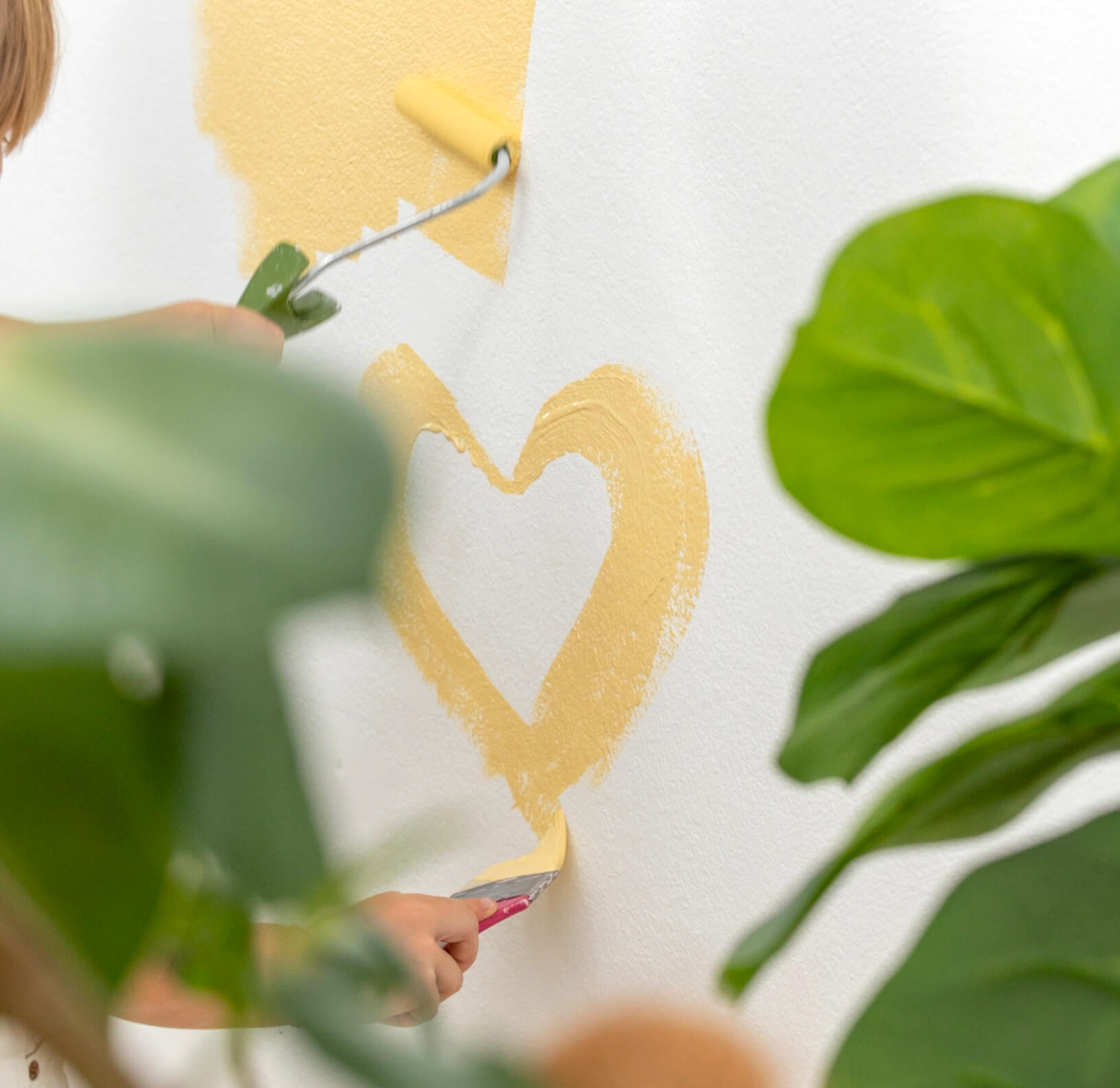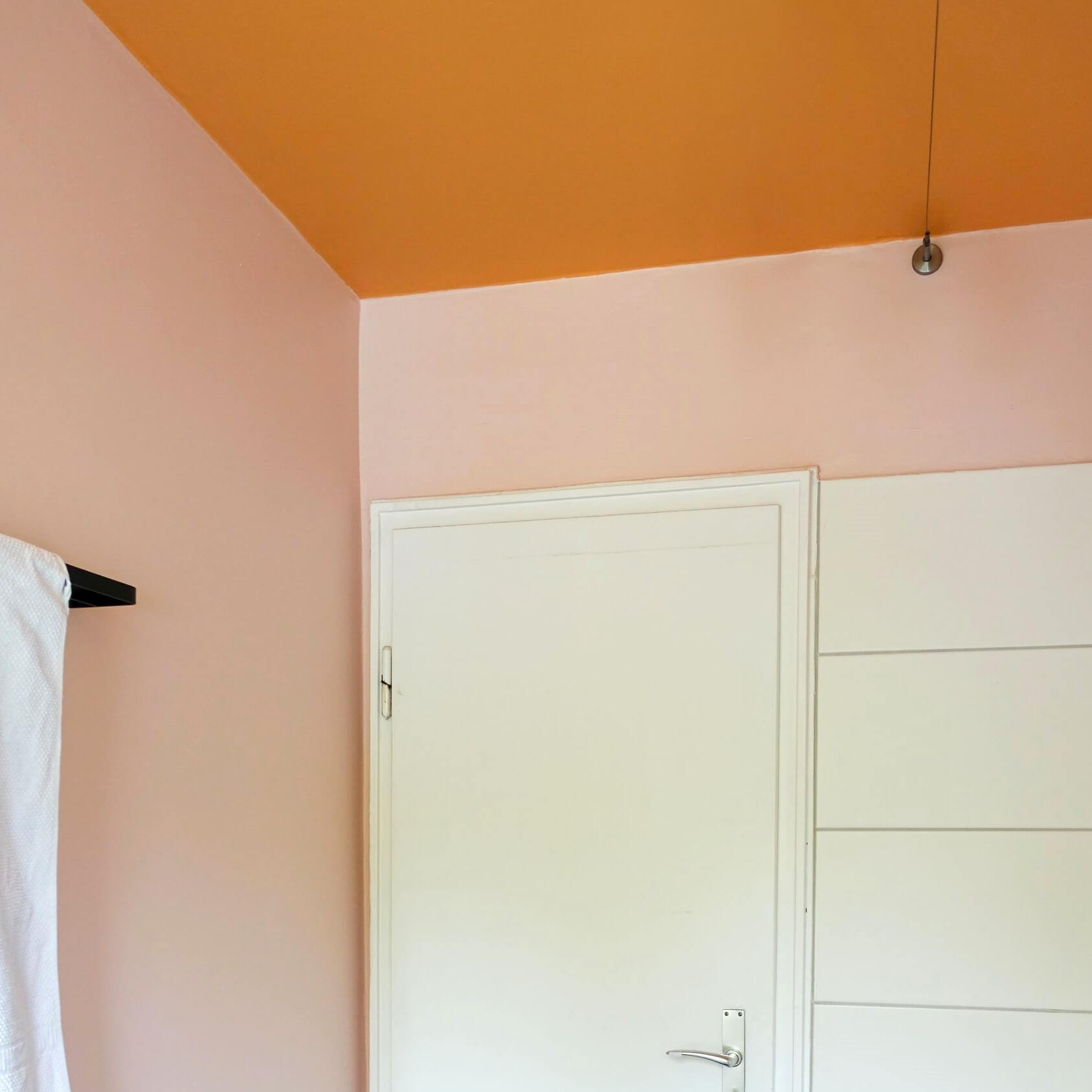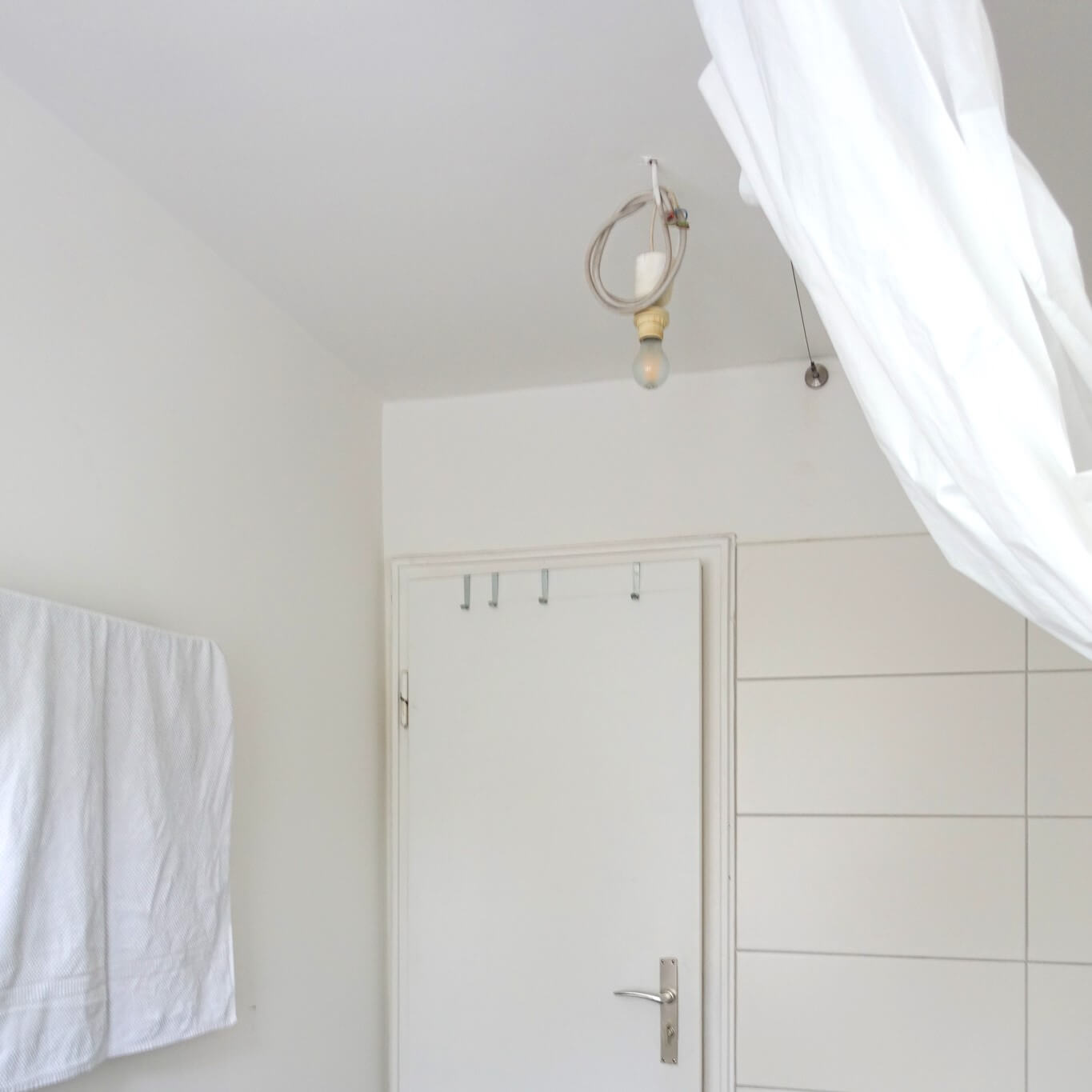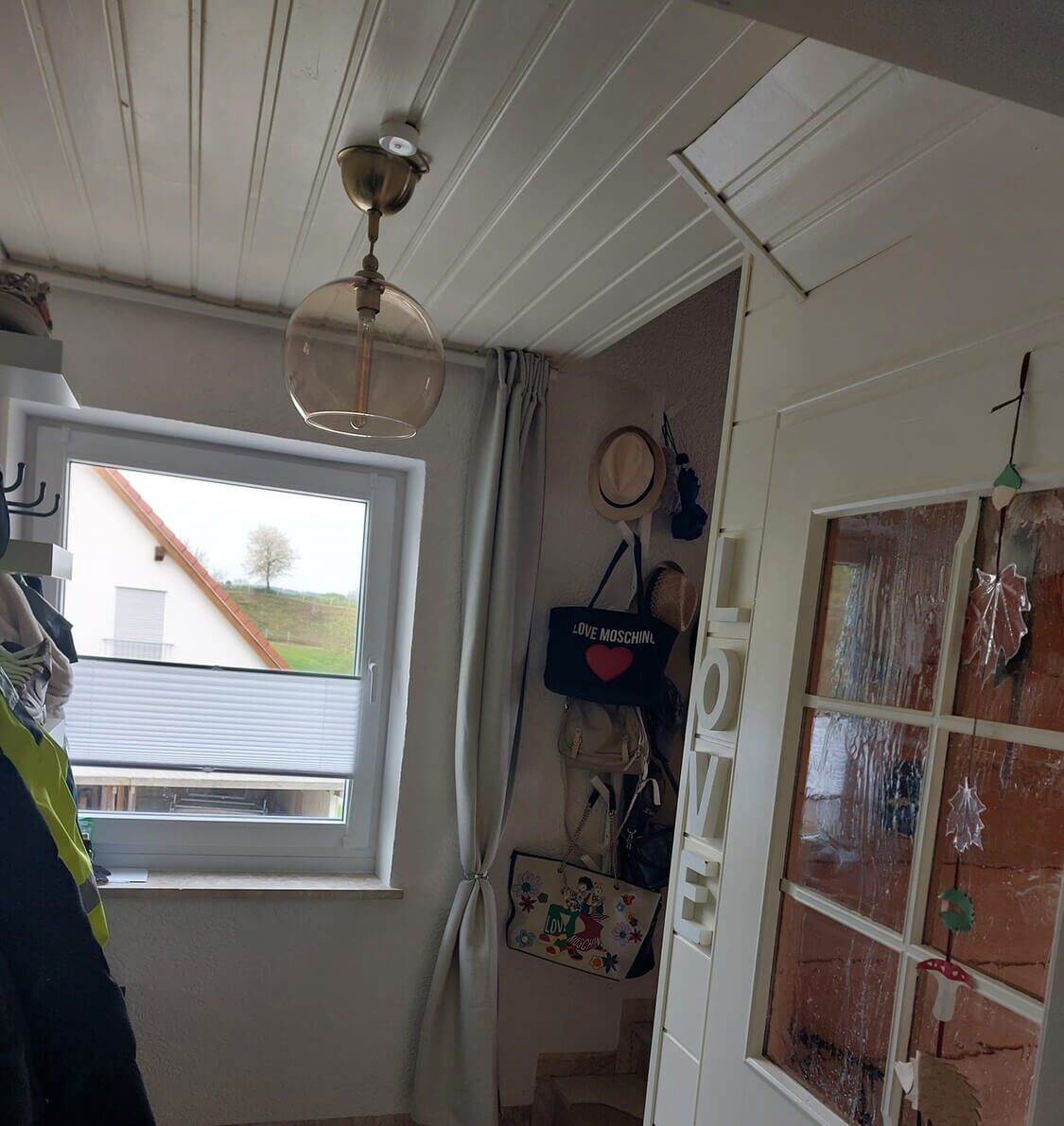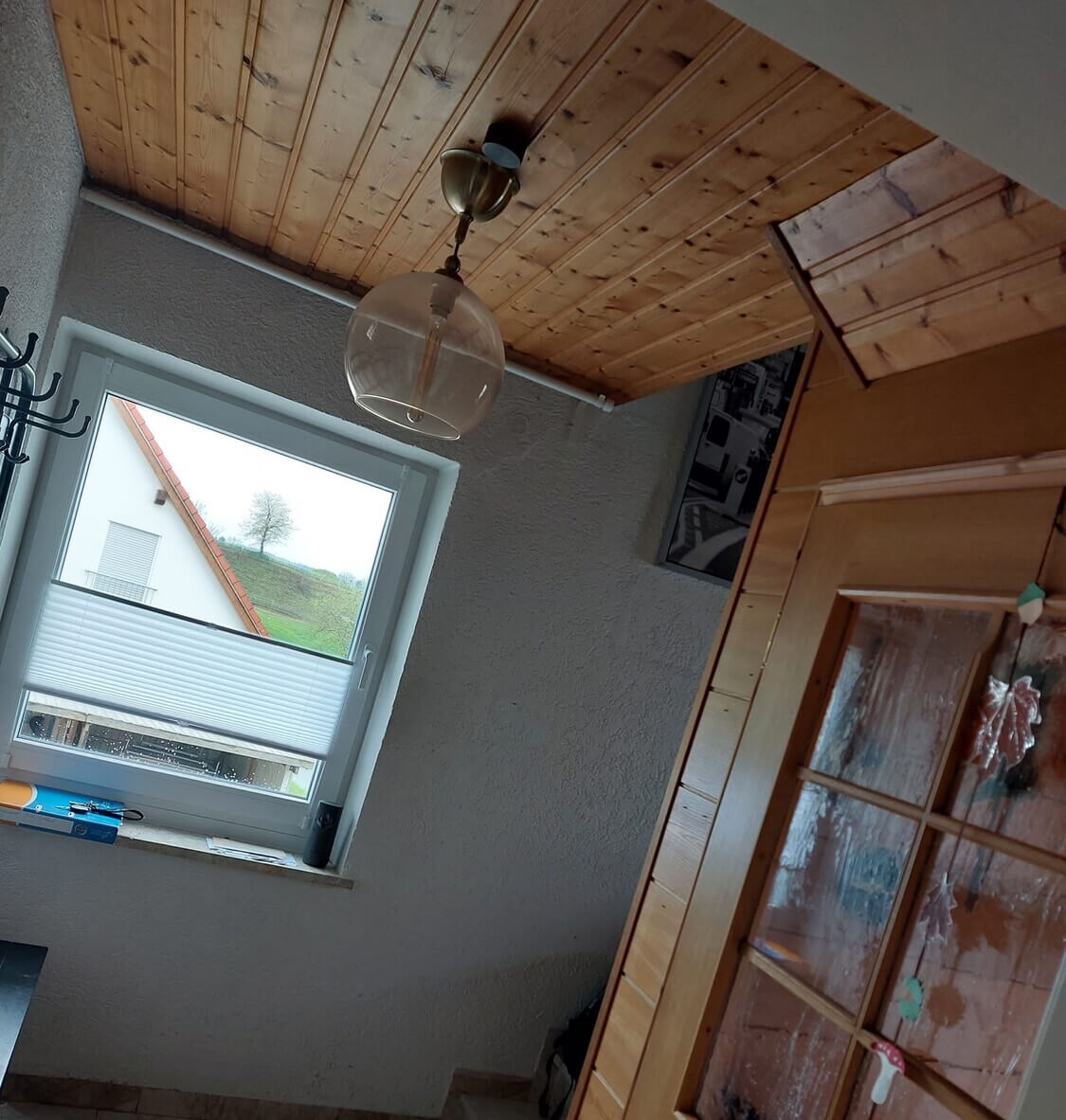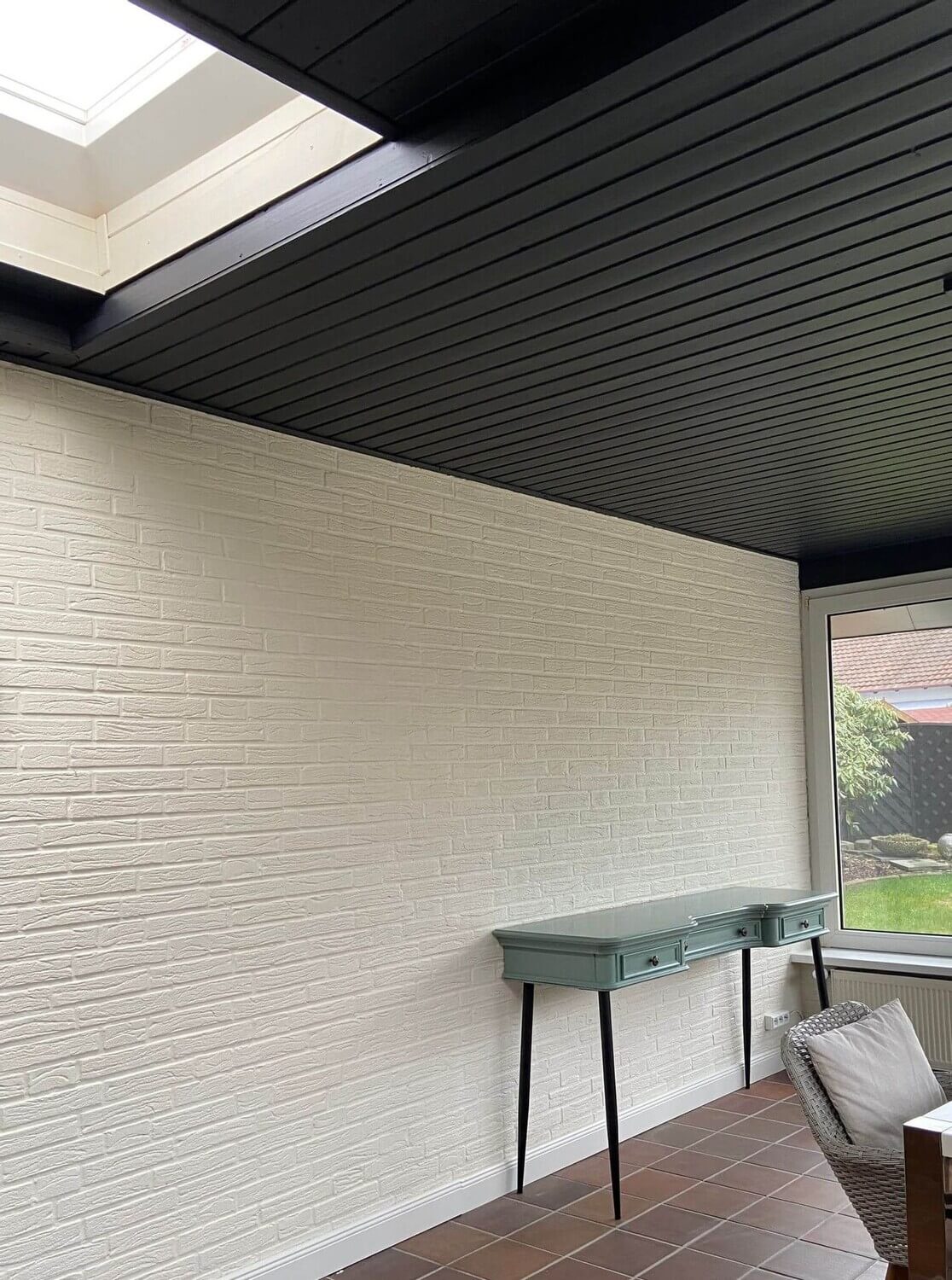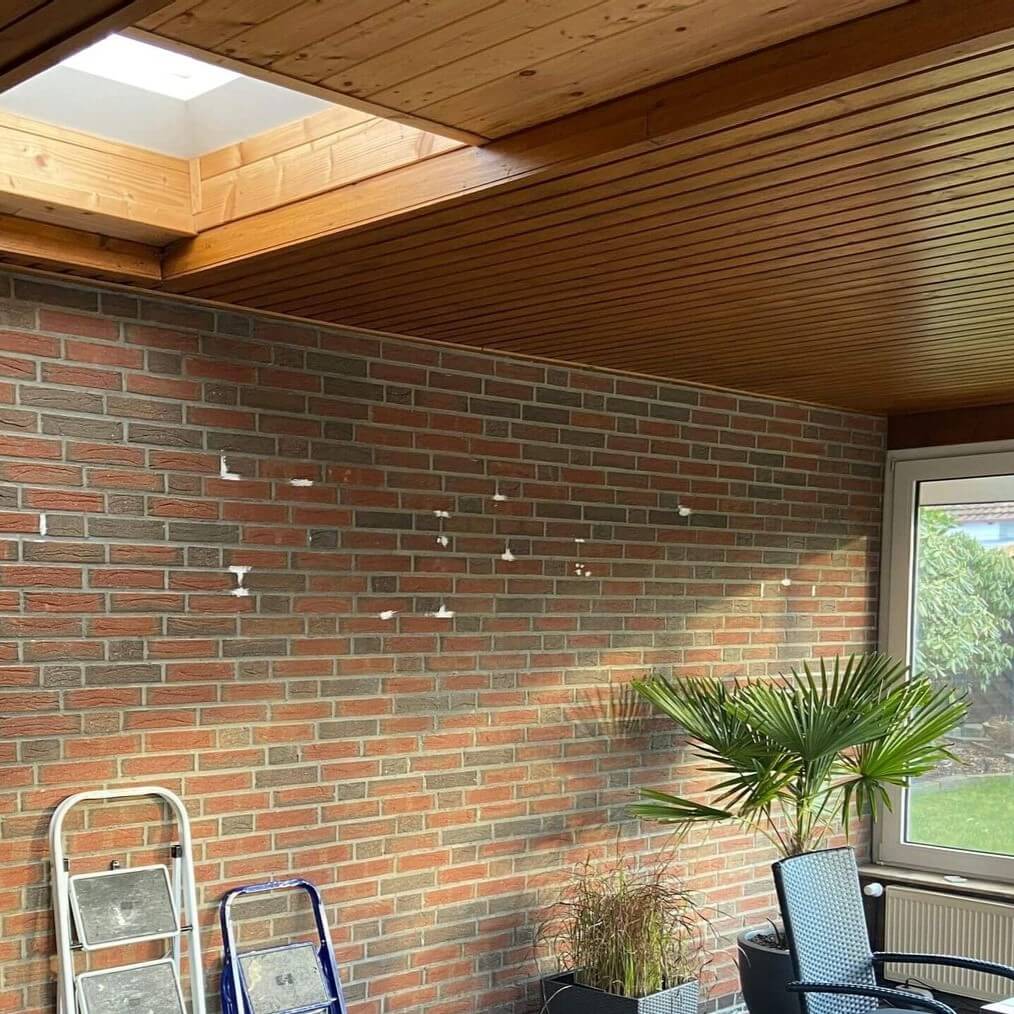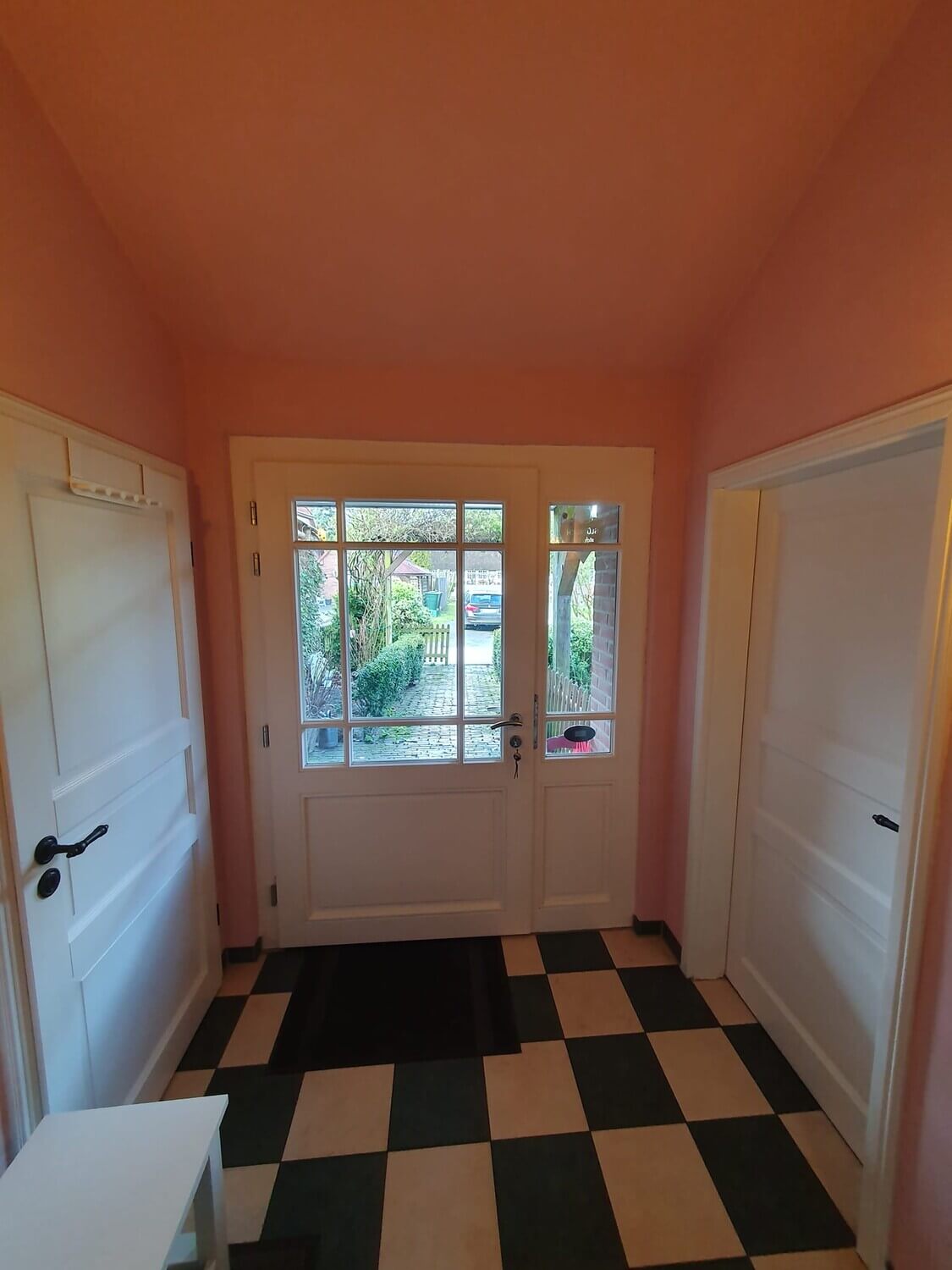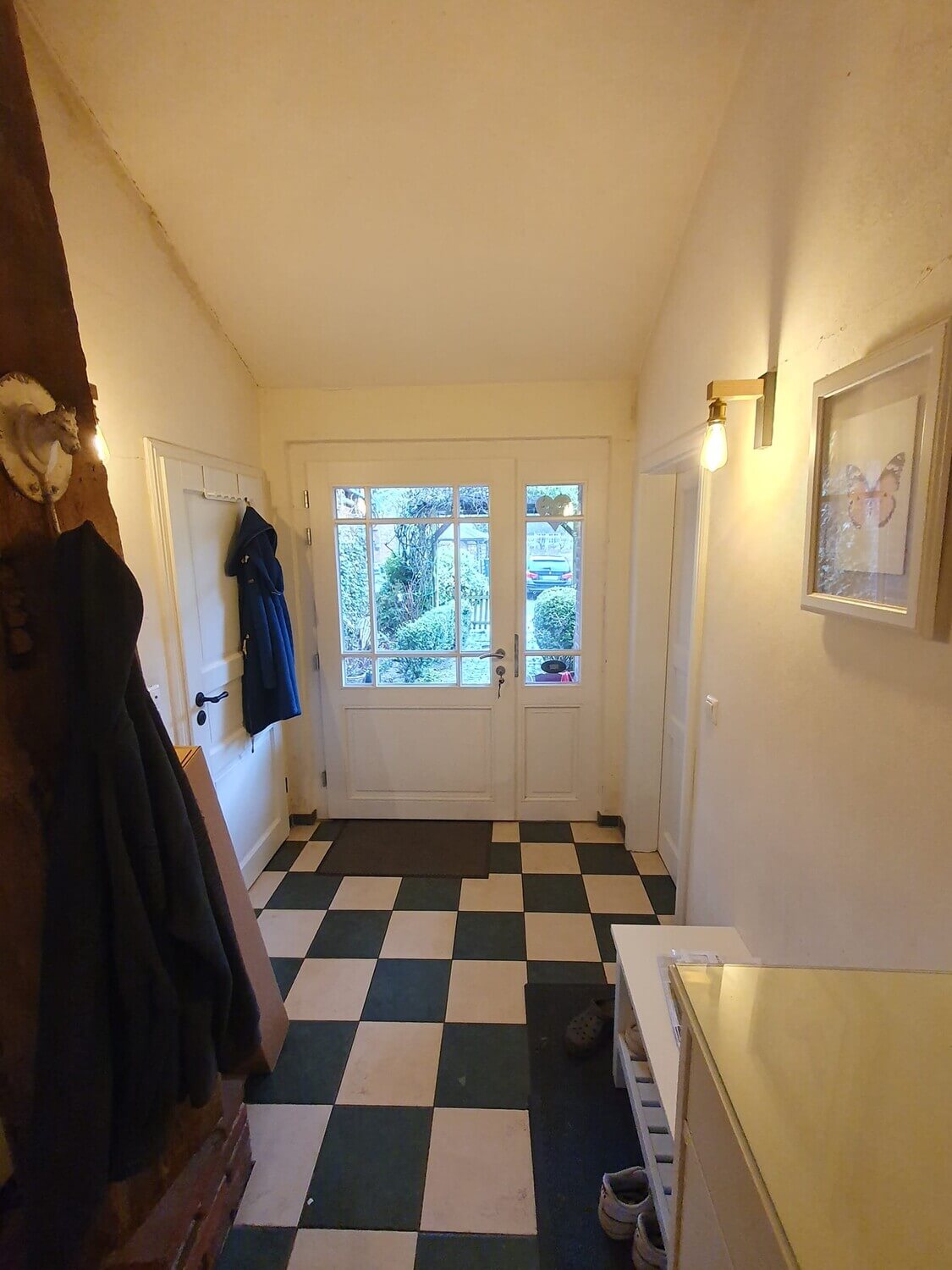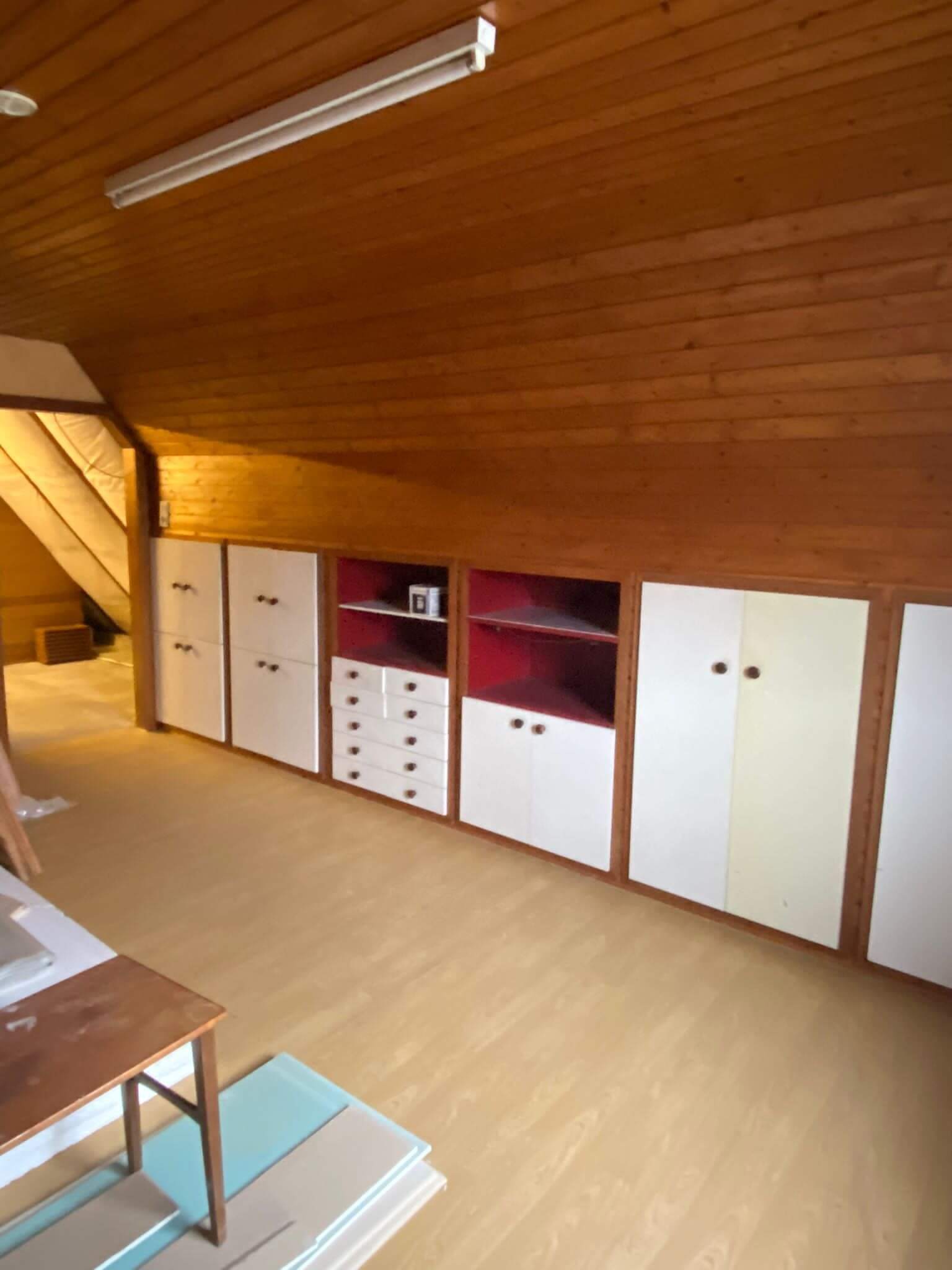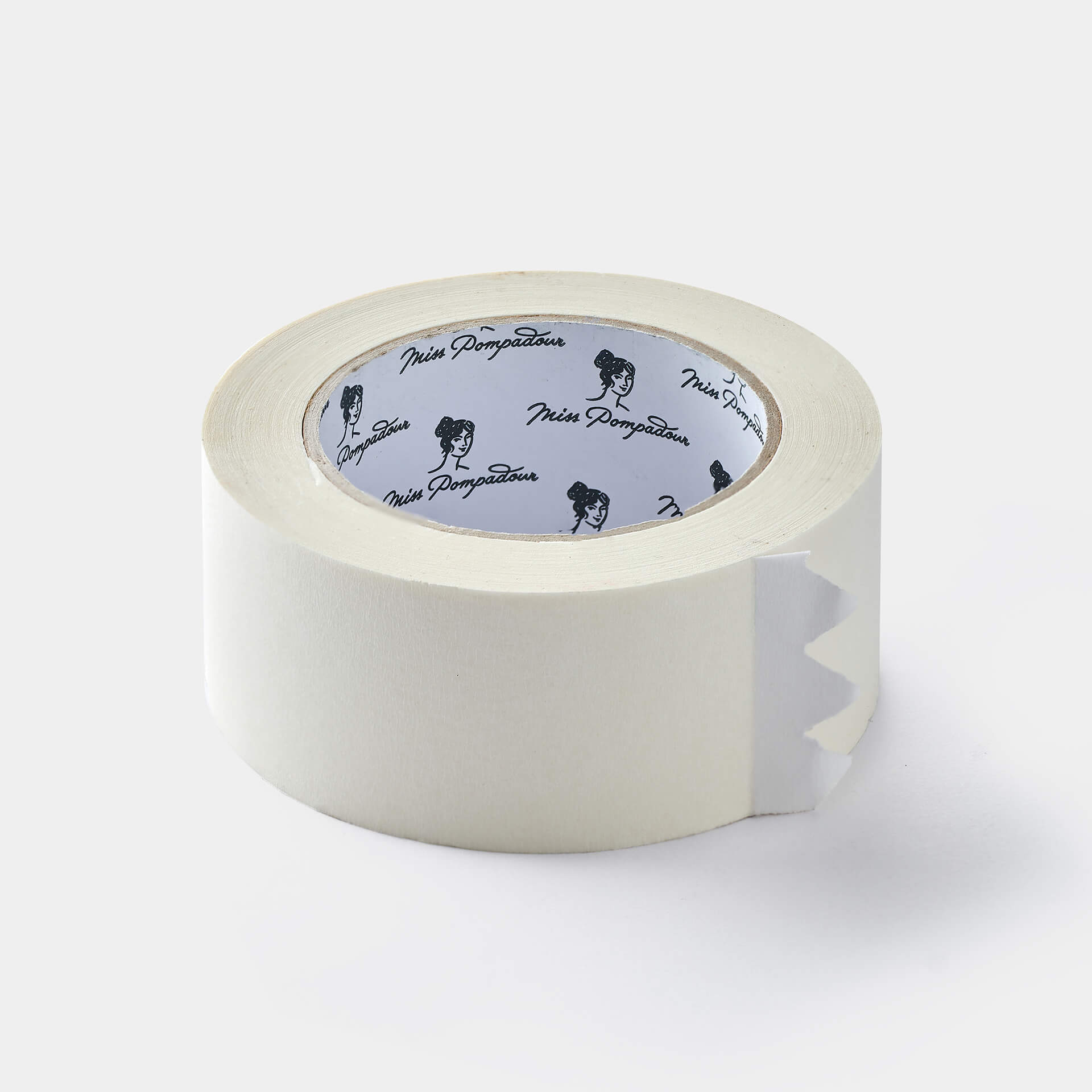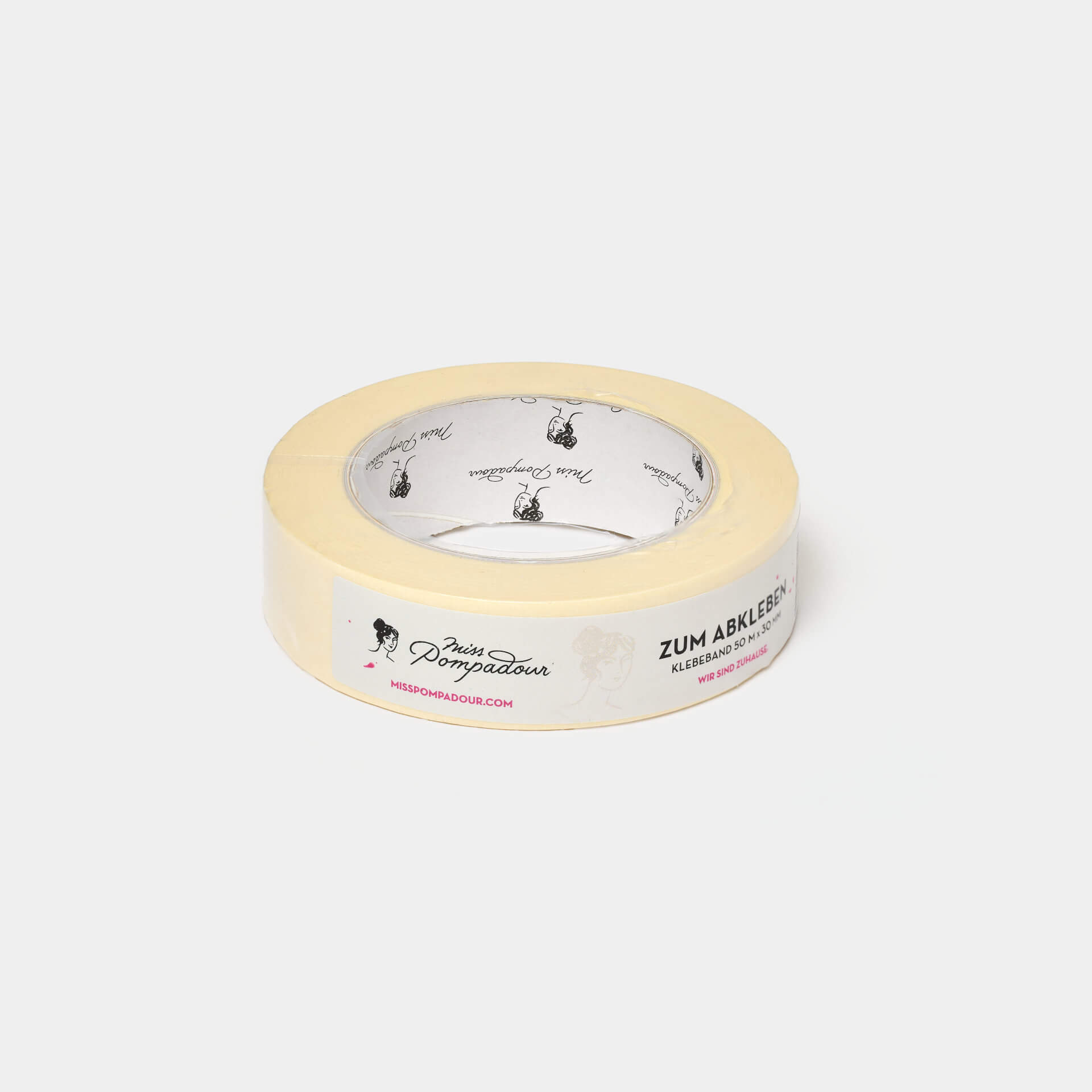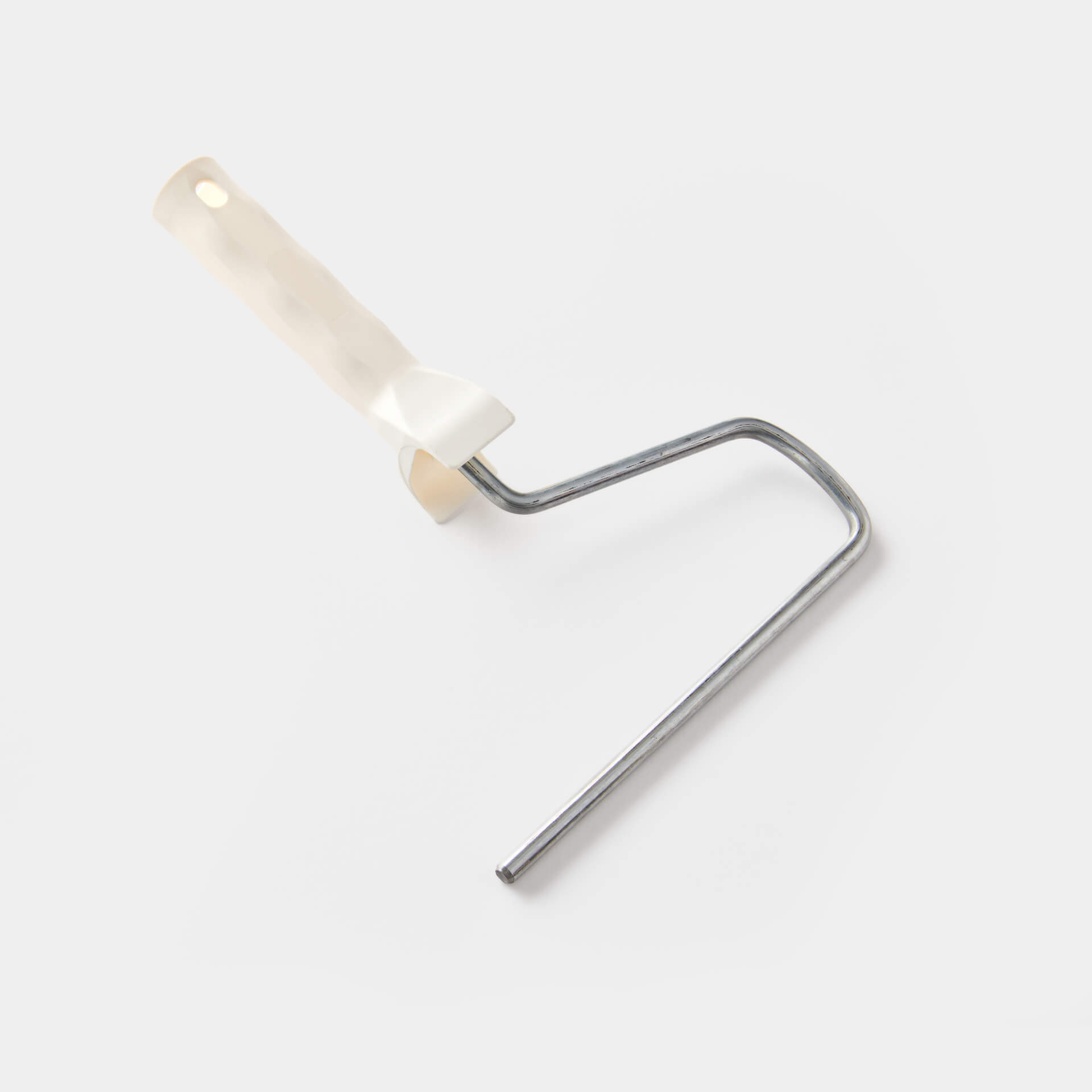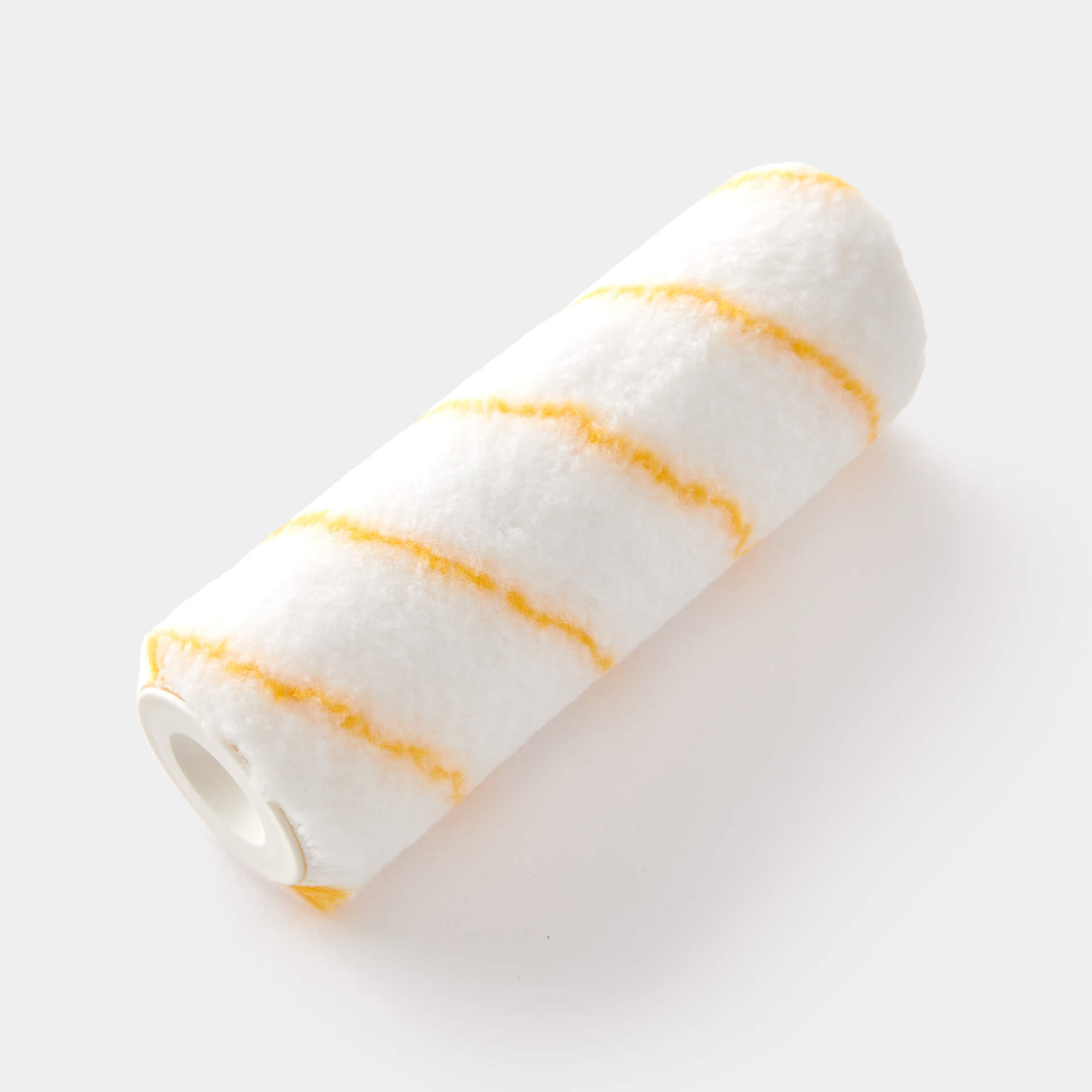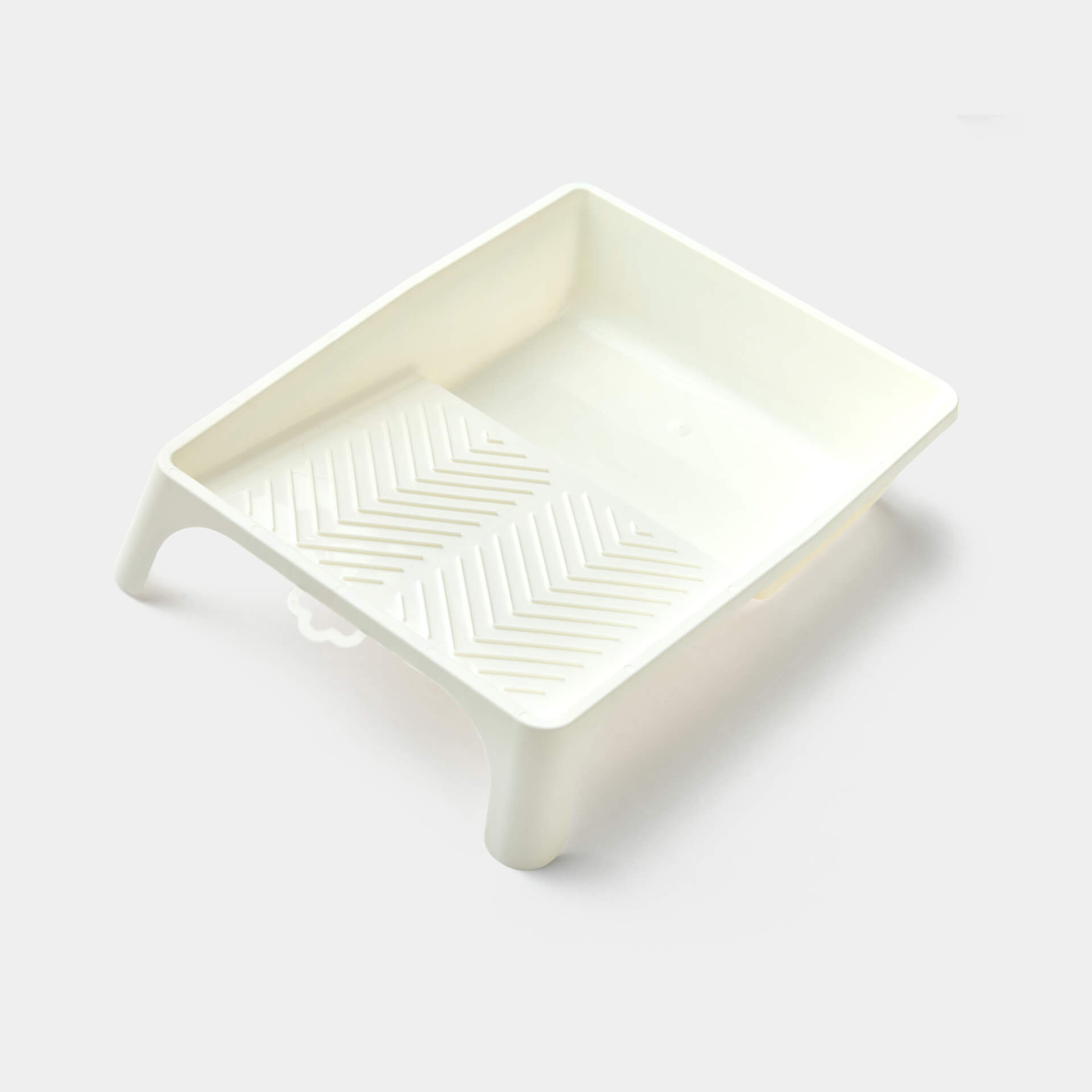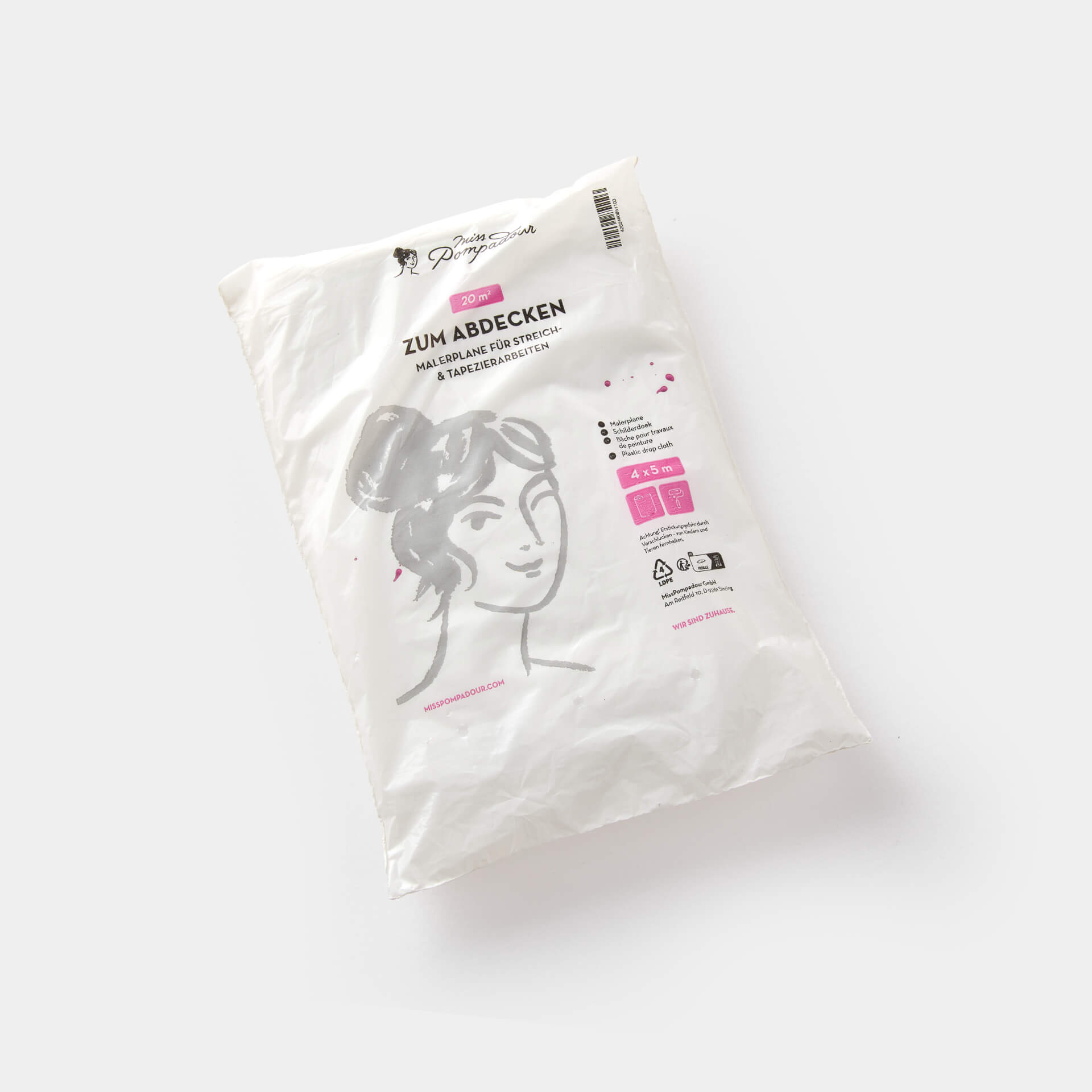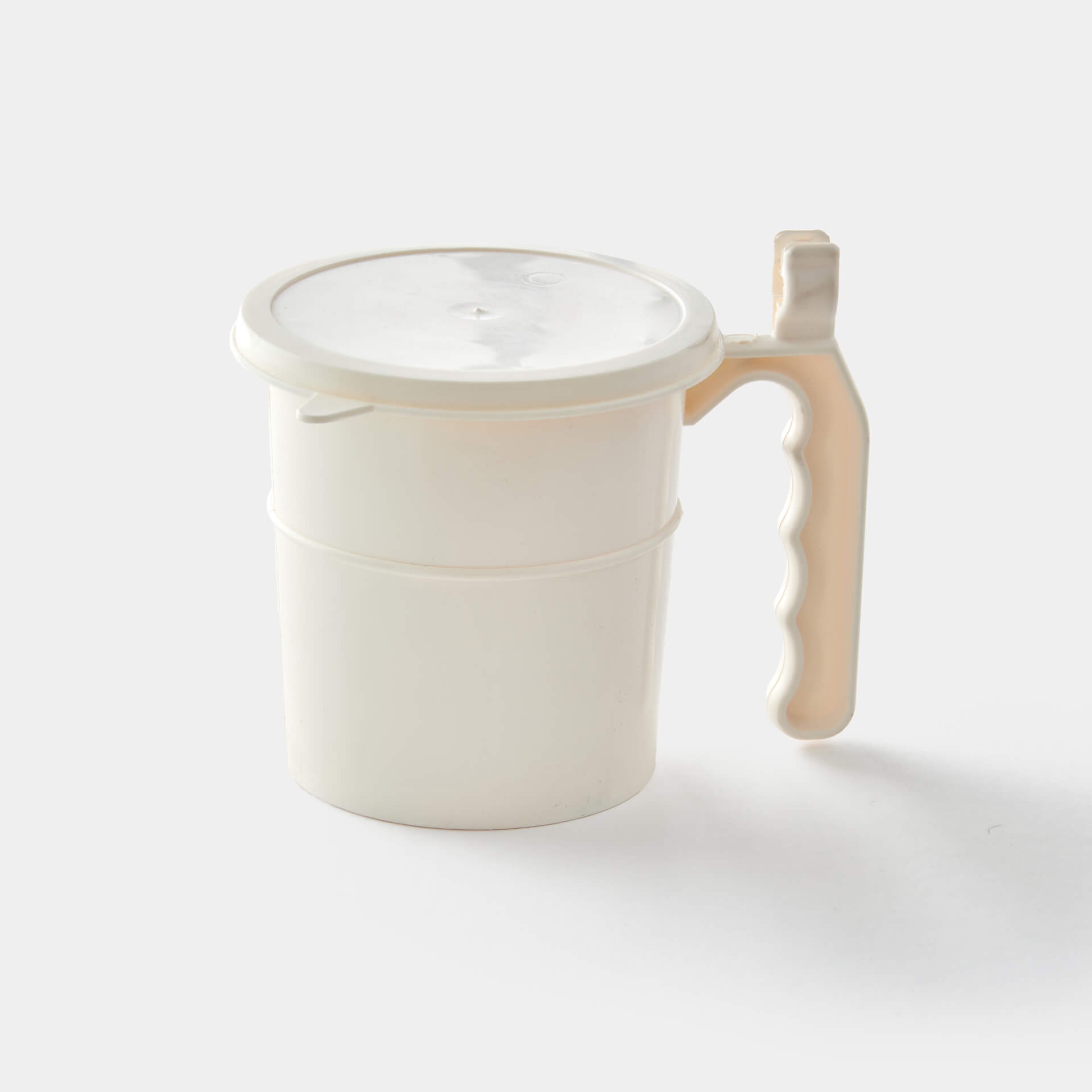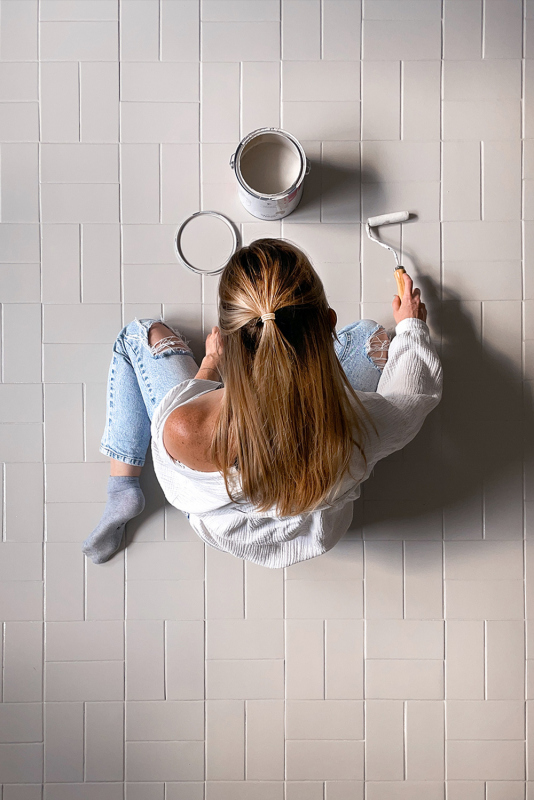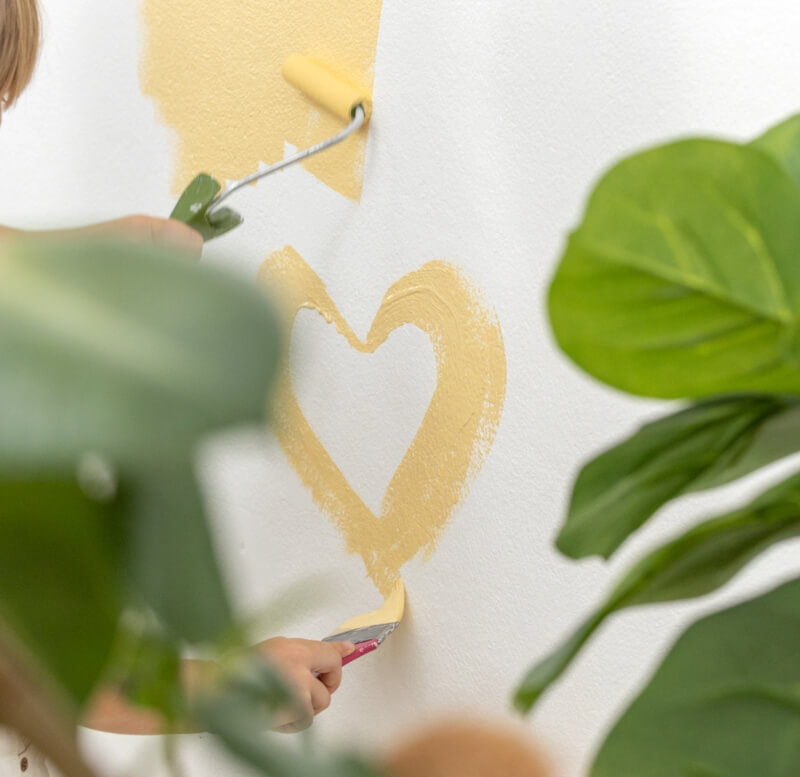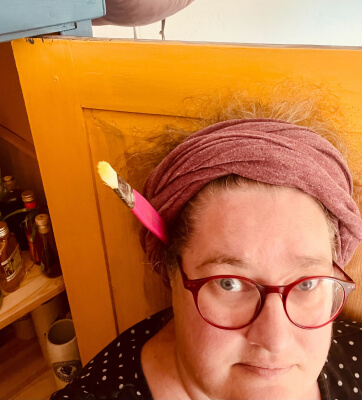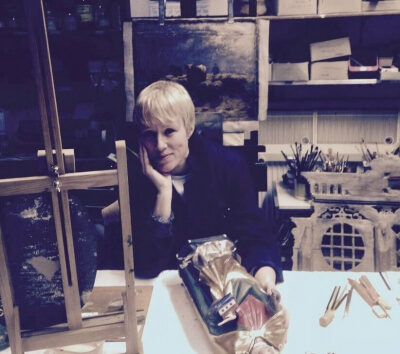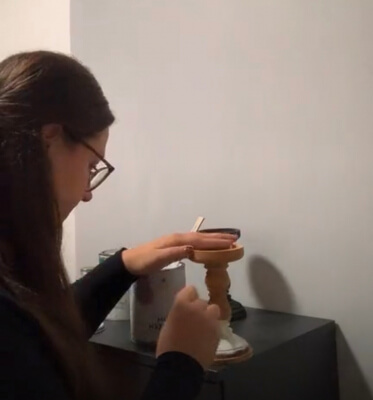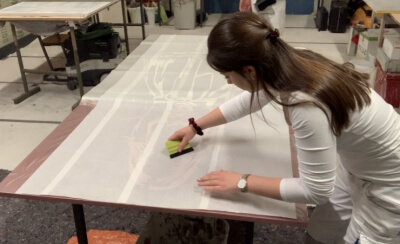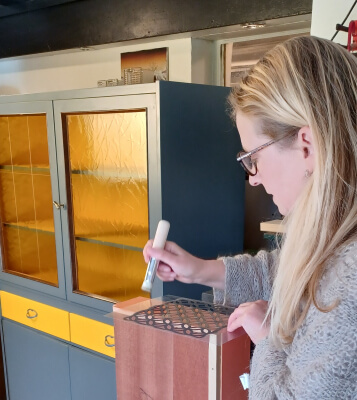Painting the ceiling in colour - this is how it's done
7 min reading time
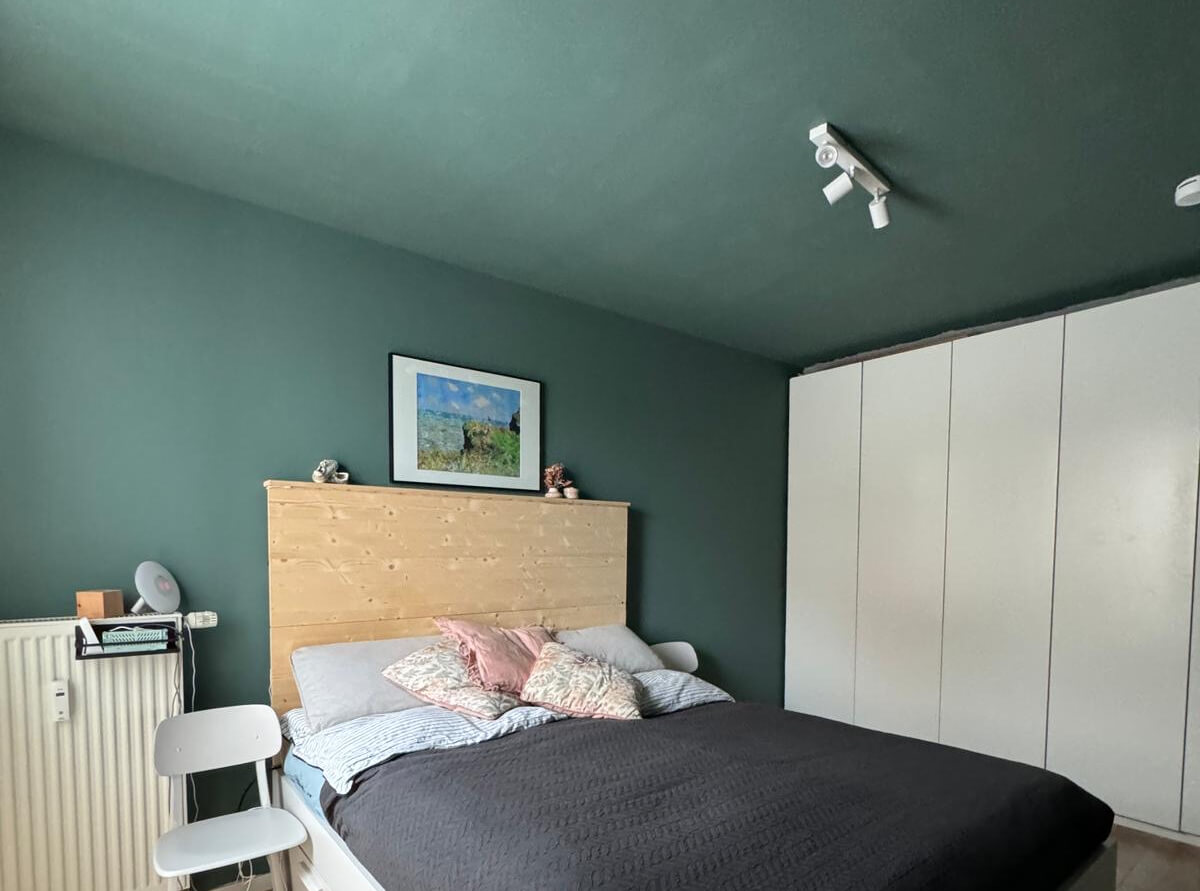
Ideas and tips for ceiling design
People have thoroughly had enough of bland, all-white walls. Slowly, many people are taking heart and daring to add colour to the walls of their rooms. But does this also apply to the ceilings? Is it advisable to paint the ceiling of a room in colour as well? We show you creative ideas that don't stop at the ceiling. With our painting tips, you don't have to be a professional to renovate your room. The result is something to be proud of.
Painting ceilings in colour - ideas from our community
In our large painting community, painting friends share their impressive Before and After pictures with each other. You'll also find photos of painting the ceiling. There are many brave people who have already taken the plunge. Let their tips and tricks inspire you!
If you want to paint a wooden ceiling, you can find more inspiration in our blog post on painting wooden ceilings.
Choosing the Right Colours to Paint the Ceiling
Painting a white ceiling
Of course you can paint your ceiling white. White paint can visually lift the ceiling and make a room look brighter. If you want it to be really bright, go for MissPompadour White with White. Little Pomp White & Bright is also a very bright shade of white.
But other, slightly tinted whites also have an impressive effect. The beautiful White with Marble, for example, creates a warm atmosphere in the room. White with Character is also very suitable as a ceiling colour, because it blends wonderfully with all wall paints.
You can also create a sophisticated effect by choosing a shade of white that contains pigments from the wall paint and thus harmonises perfectly with it. For example, you can paint White with Linden Green with a green wall paint or White with Powder with a reddish wall paint. Blue with Snow goes particularly well with blue tones and White with Vanilla complements all brown and beige tones.
Setting living room accents with a dark ceiling
A dark colour shade can also accentuate a ceiling. Dark colour on the ceiling is always a good idea if the ceiling is very high, as is often the case in old buildings. Then it is even advisable to pull the ceiling colour 20-30 cm down into the wall.
But even with normal room height, which in new buildings is about 250 cm, a dark ceiling can create an atmospheric ambience. This is particularly useful in a bedroom or bathroom.
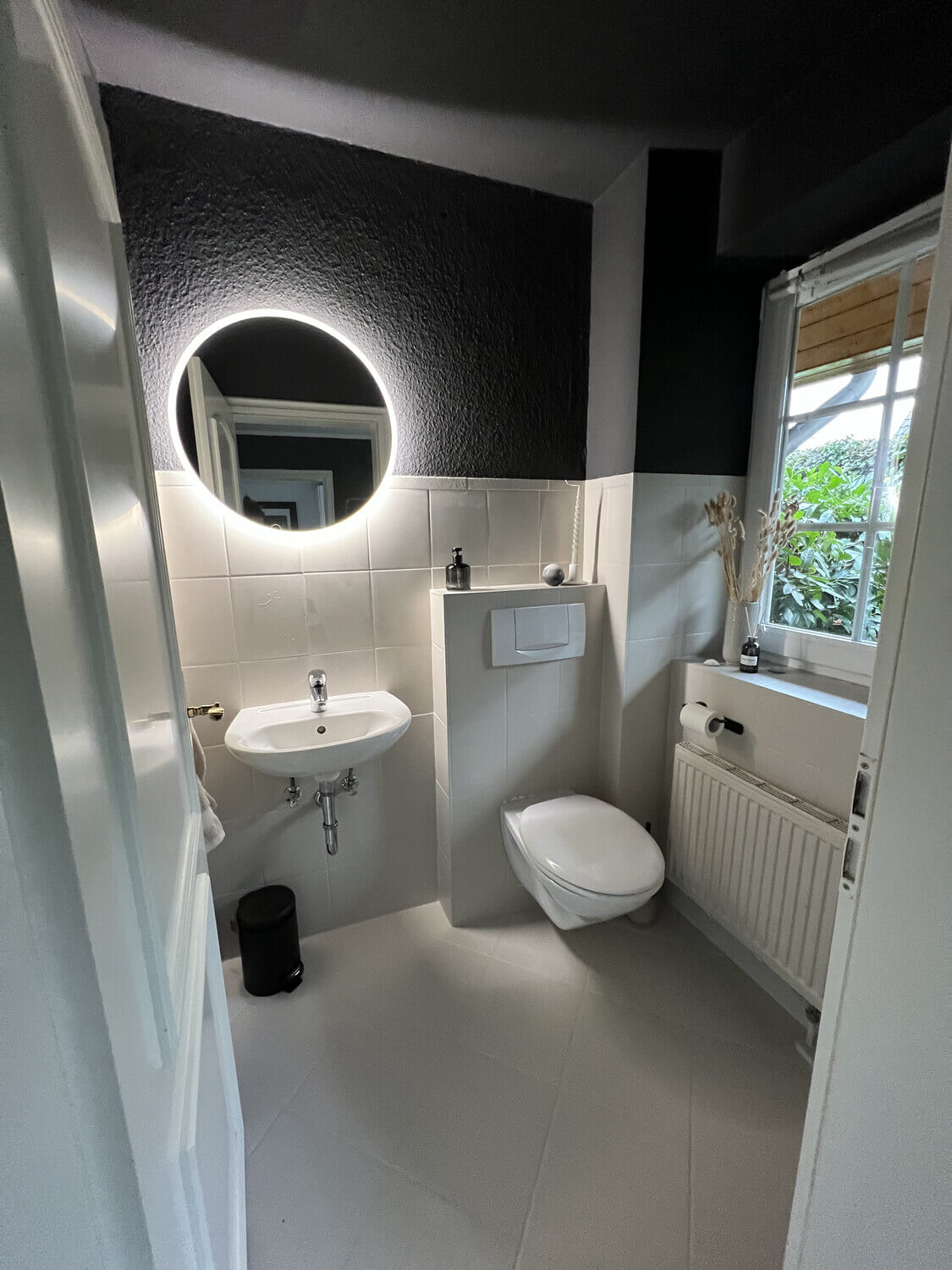
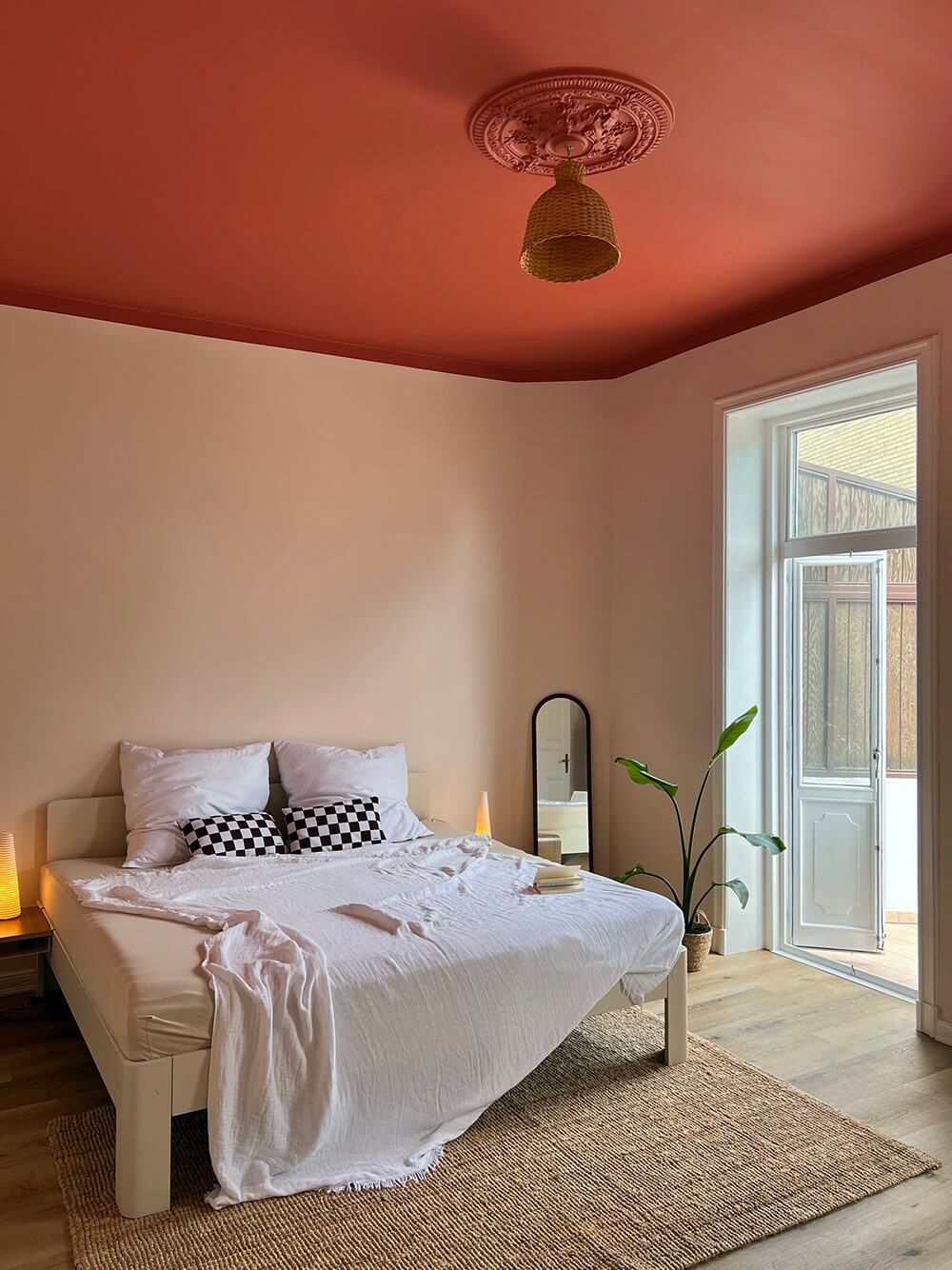
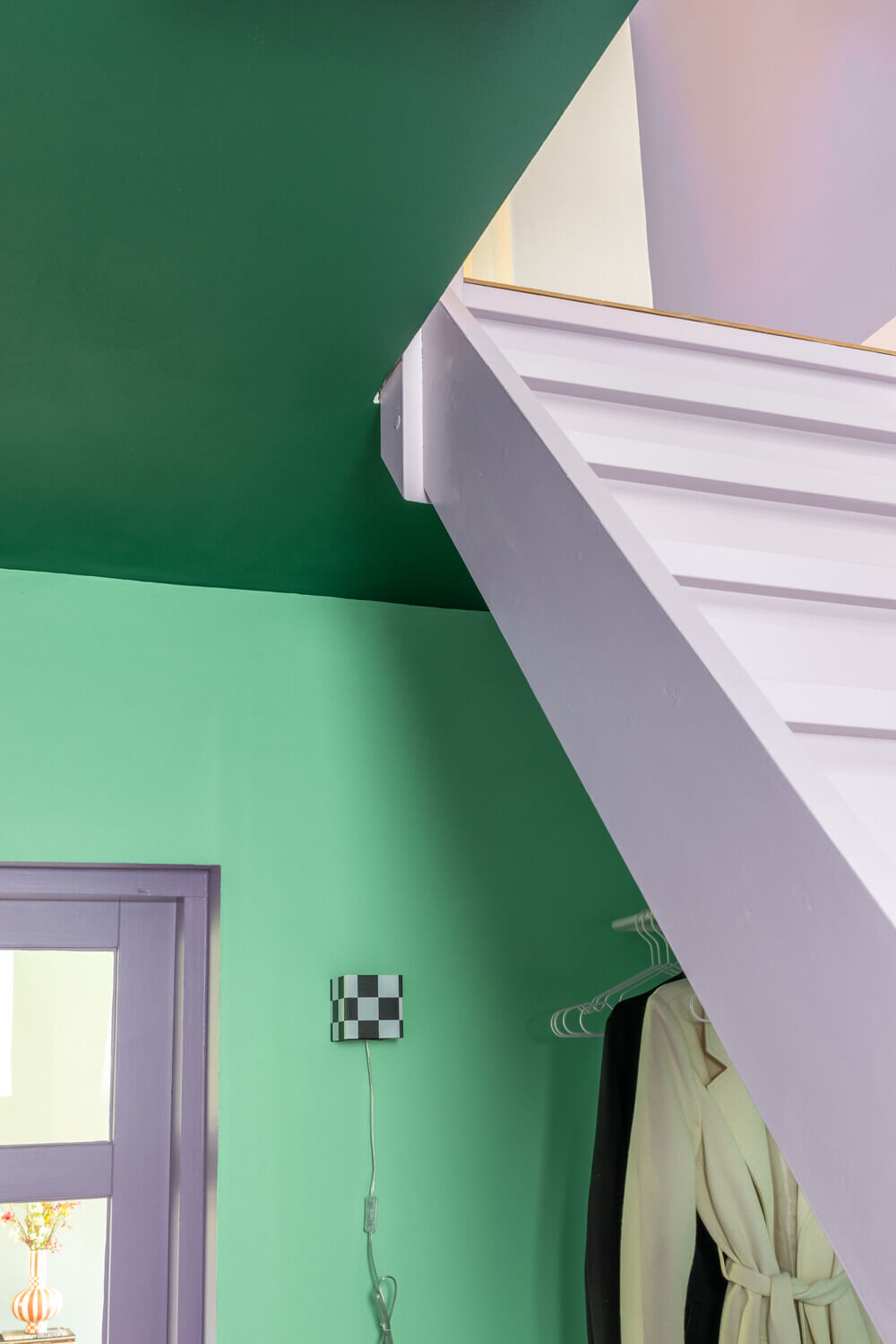
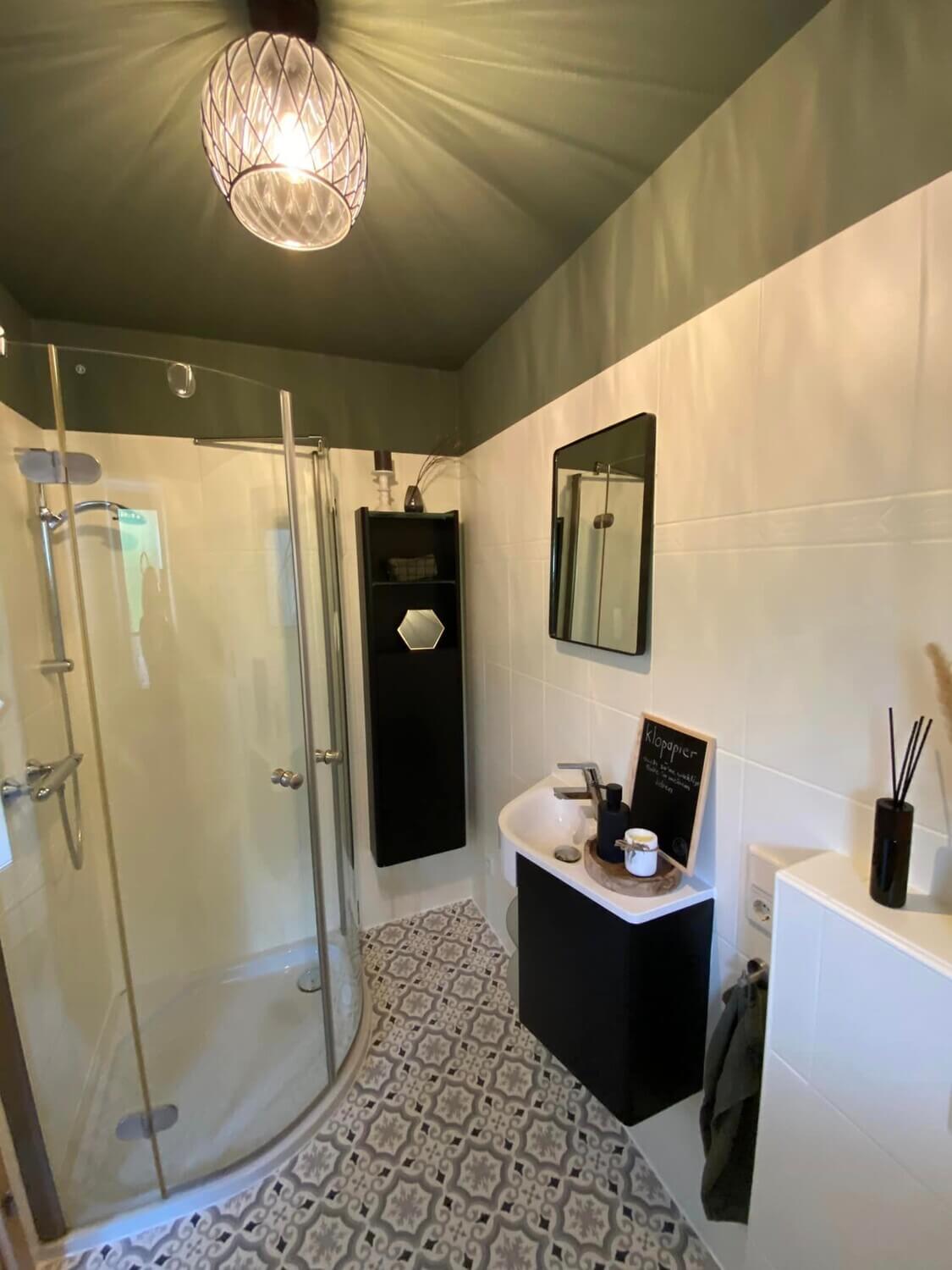
Monochrome design: Painting ceilings and walls in the same colour
Of course, you can also paint the ceiling and walls in the same colour. This creates a wonderful feel-good atmosphere and a whole new sense of space. Painting the ceiling then acts like a soft focus for the whole room.
Even though we humans used to live in caves and certainly found this (sometimes more and sometimes less) cosy, you should not use too dark colour shades for a monochrome room design in order to avoid a cave character.
Step-by-step instructions: Painting a ceiling made easy
The easiest way to paint a ceiling is with a paint sprayer. It doesn't matter if the ceiling is boarded or plastered. The slightly thinned paint is sprayed thinly onto the surfaces. With a monochrome colour scheme, only the floor and the window and door openings need to be well protected. If you are only spraying the ceiling, you should hang your walls. In principle, it is always right to tackle the ceiling before the walls. If you want to paint your ceiling conventionally with a Roller, proceed as follows:
Step 1:
Proper preparation is important. Carefully clean the ceiling with an antistatic duster to remove dust and cobwebs. If possible, dismantle your lamps.
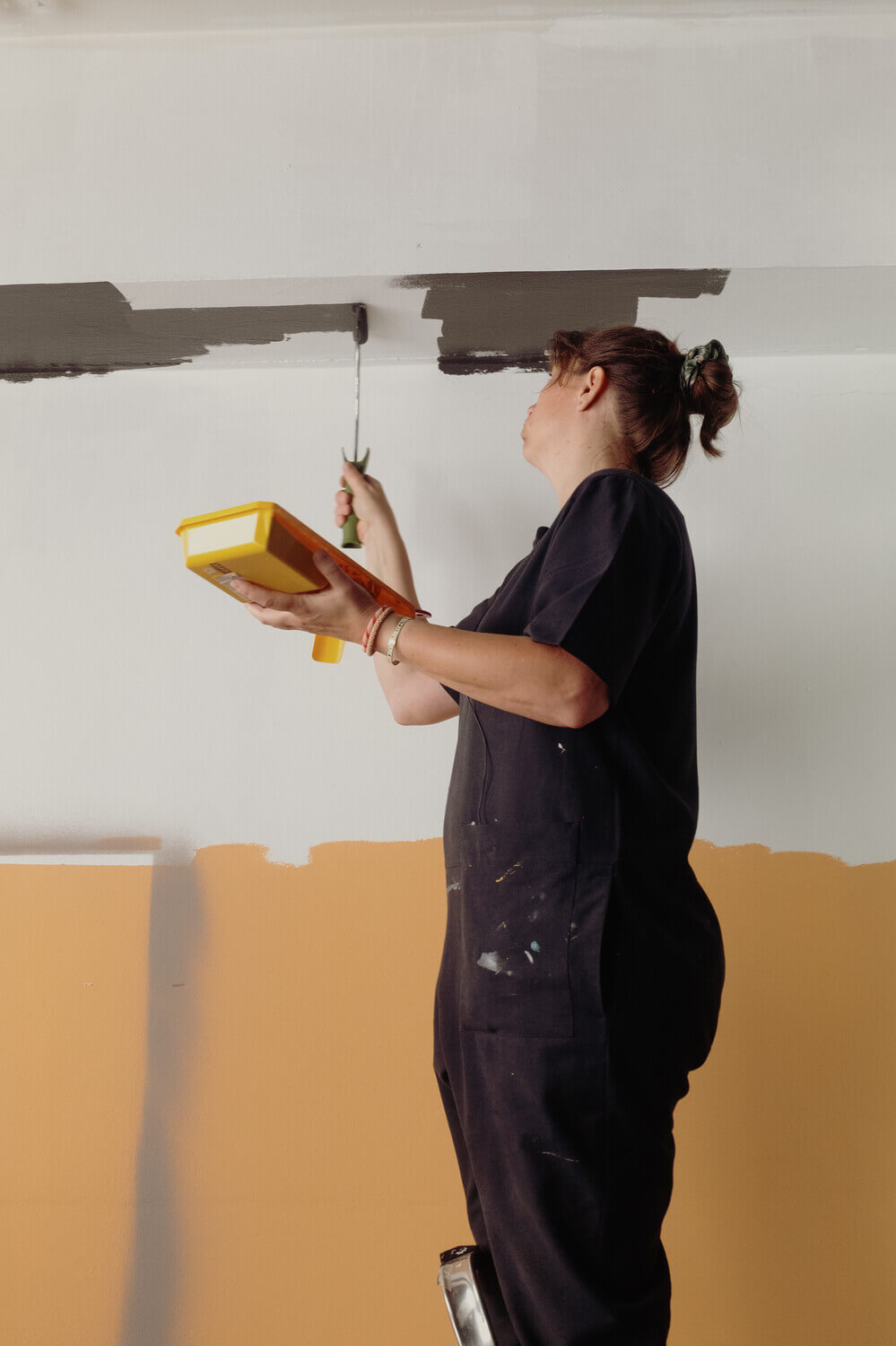
Step 2:
- Extend your paint roller with a long handle. And use a smaller paint roller so that it is not too heavy and the work is not too tedious.
- If you want to paint the walls afterwards, it's enough to cover the floor (and furniture if necessary) to prevent paint splashes on the floor.
- Tape the ceiling to the wall with masking tape. Tape the ceiling with masking tape at a height to which you want to pull the ceiling down. For low rooms, this can be the edge of the wall; for high rooms, it can be 20 or 30 cm below the edge of the wall.
Step 3:
Now paint the ceiling at least twice in your desired colour. Remove the masking tape after each coat while the paint is still wet to ensure clear edges.
Step 1:
Proper preparation is important. Carefully clean the ceiling with an antistatic duster to remove dust and cobwebs. If possible, dismantle your lamps.
Step 2:
- Extend your paint roller with a long handle. And use a smaller paint roller so that it is not too heavy and the work is not too tedious.
- If you want to paint the walls afterwards, it's enough to cover the floor (and furniture if necessary) to prevent paint splashes on the floor.
- Tape the ceiling to the wall with masking tape. Tape the ceiling with masking tape at a height to which you want the ceiling to go down. For low rooms, this can be the edge of the wall; for high rooms, it can be 20 or 30 cm below the edge of the wall.
Step 3:
Now paint the ceiling at least twice in your desired colour. Remove the masking tape after each coat while the paint is still wet to ensure clear edges.
Step 4:
Then paint the walls.
What you need To Paint the Ceiling
- Feather duster
- Masking tape
- plastic drop cloth, masking fleece or masking paper
- Paint bucket and paint tray
- Paint roller
- Long handle to extend the paint roller
Content: 10 piece (€0.60* / 1 piece)
FAQs: Frequently Asked Questions about Painting the Ceiling
Can you paint a ceiling a colour?
Of course, you can paint a ceiling in colour. It is only important that the ceiling colour always harmonises with the wall paint or wallpaper.
What paint do you use for painting the ceiling?
Any wall emulsion is suitable for the ceiling. As a ceiling is not subject to wear and tear and the focus is instead on appearance, the extra matt tones of The Valuable Wall Paint or the chalk paints from MissPompadour are a good choice.
Which Rollers do I use To Paint the Ceiling?
The normal paint roller for the wall is also suitable for the ceiling. Two tips: It is ideal to extend the handle with a long stick and to choose a paint Roller that is not too big - the paint makes the Rollers quite heavy!
What is the effect of a dark ceiling?
A dark colour makes the ceiling look lower. This can be a desired effect in rooms with very high ceilings. You can enhance this effect by painting the top section of the wall the same colour as the ceiling.
Can you paint the wall and ceiling the same colour?
A monochrome wall design can be very impressive. The colour then acts a little as a soft focus. Especially in bedrooms, bathrooms and wellness rooms, this is a great effect.
Do I paint the wall first or the ceiling?
Always paint the ceiling first. However, if you paint the ceiling and the wall the same colour, it doesn't matter which Roller you start with. Then you only have to mask the windows and doors and cover the floor.


